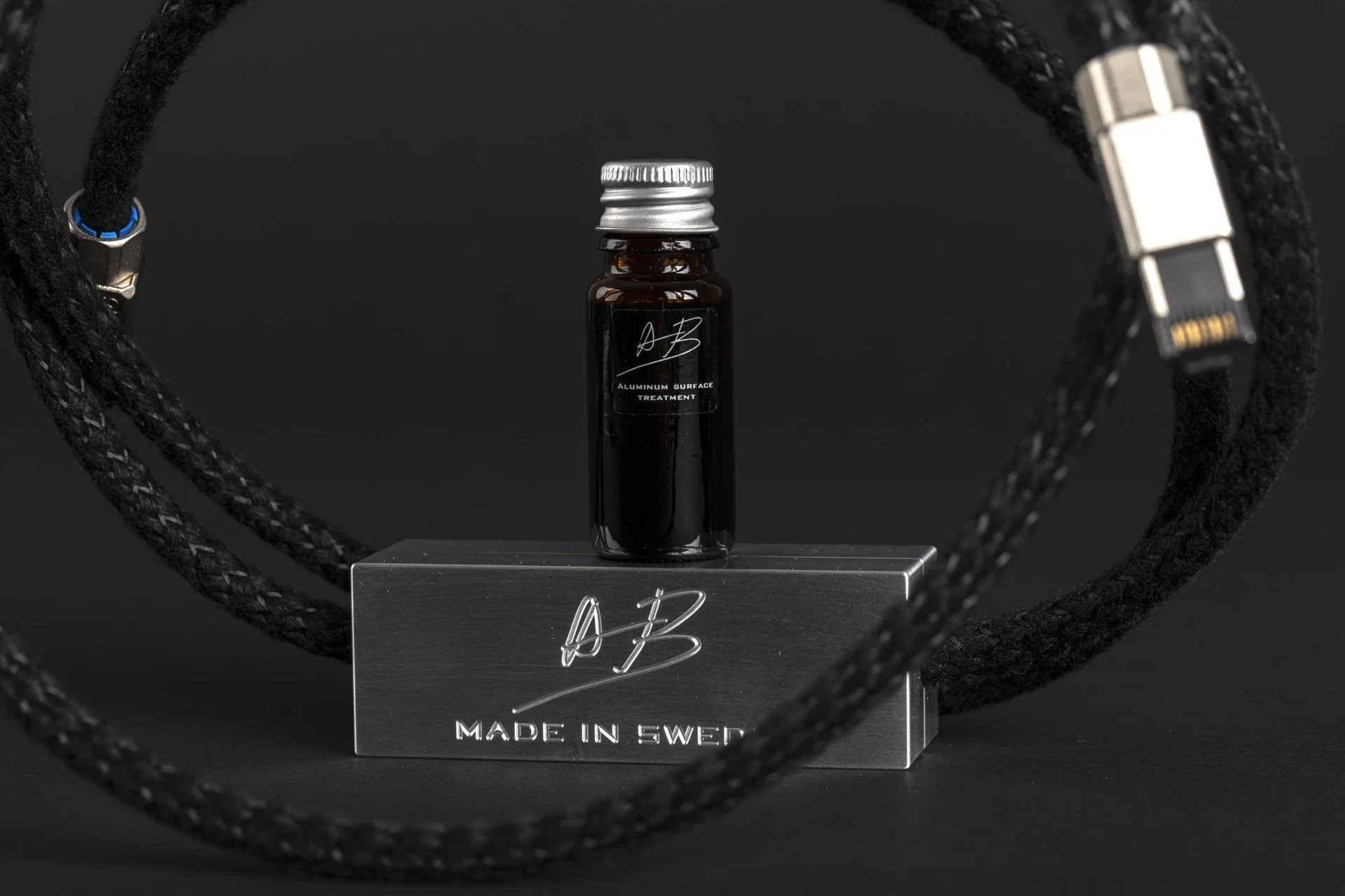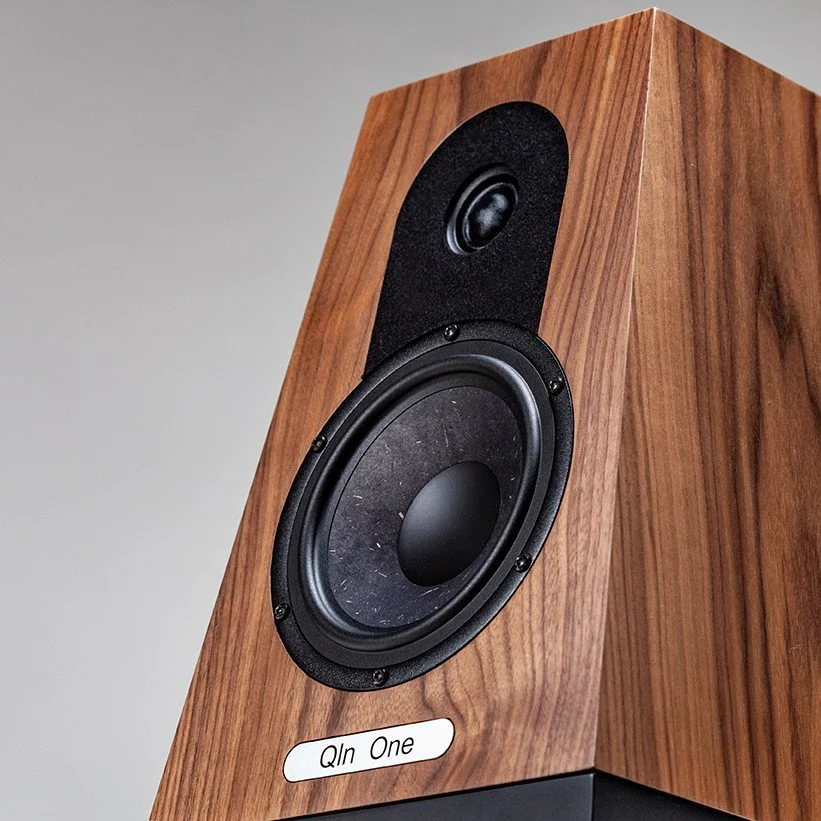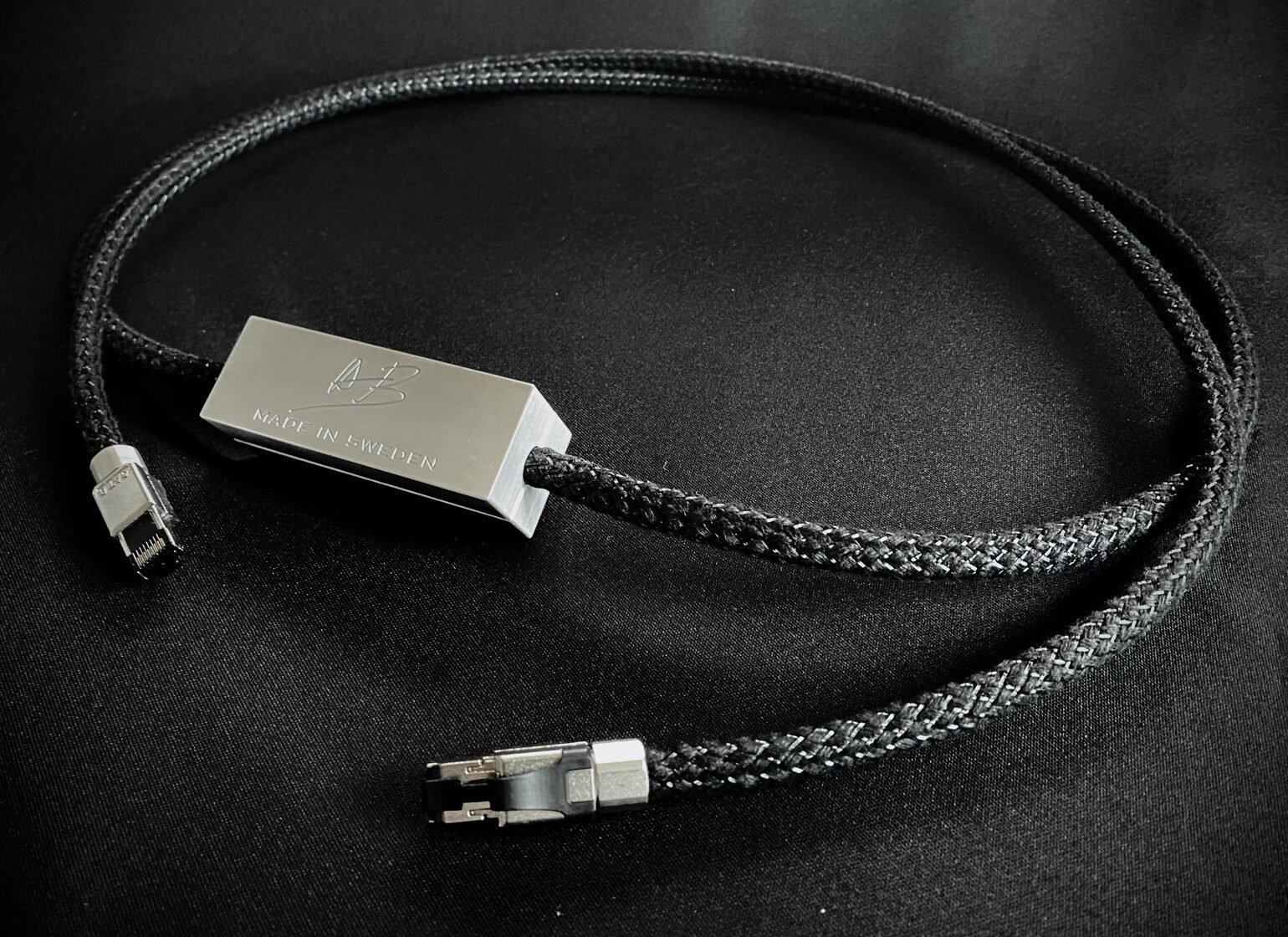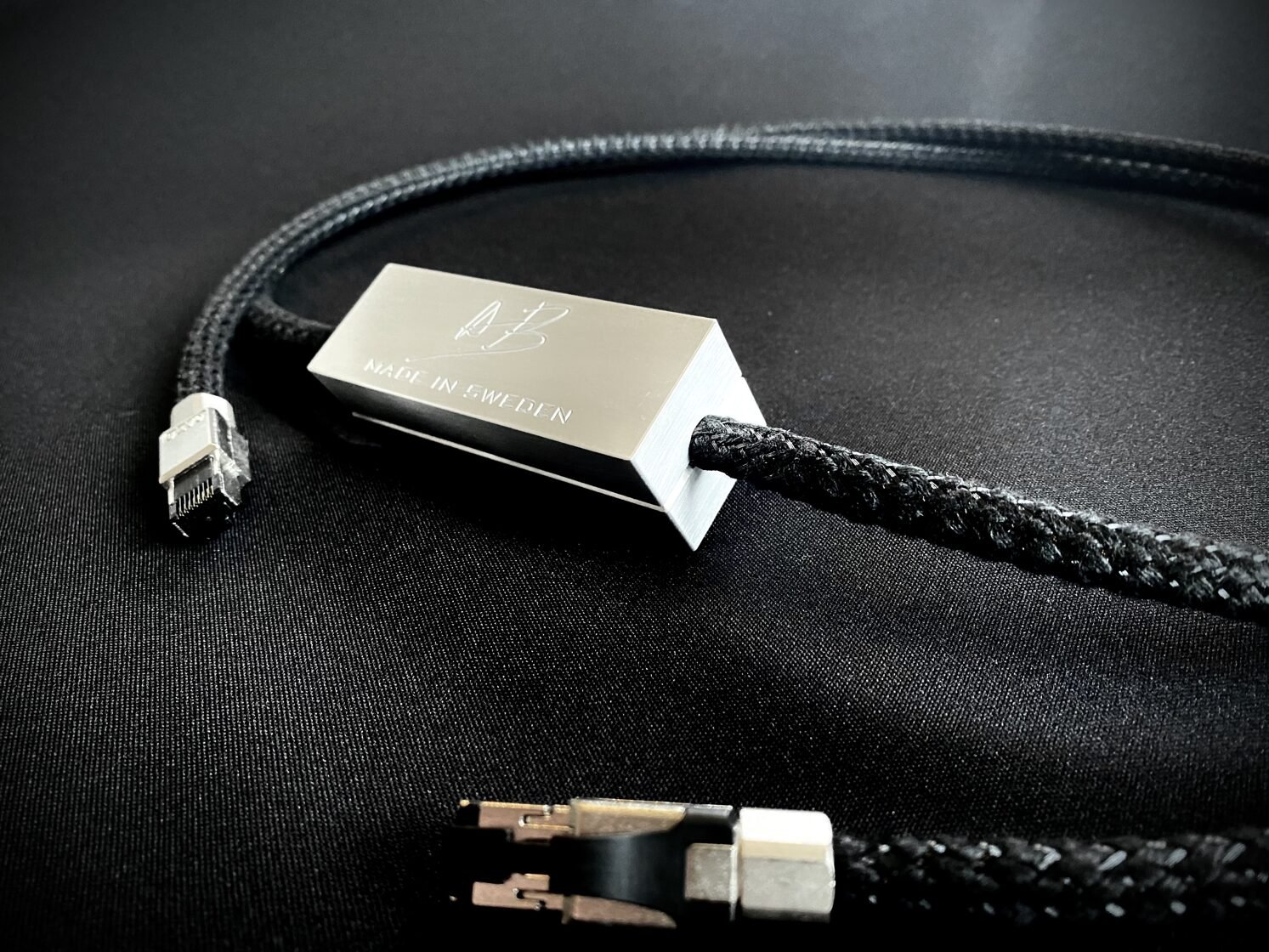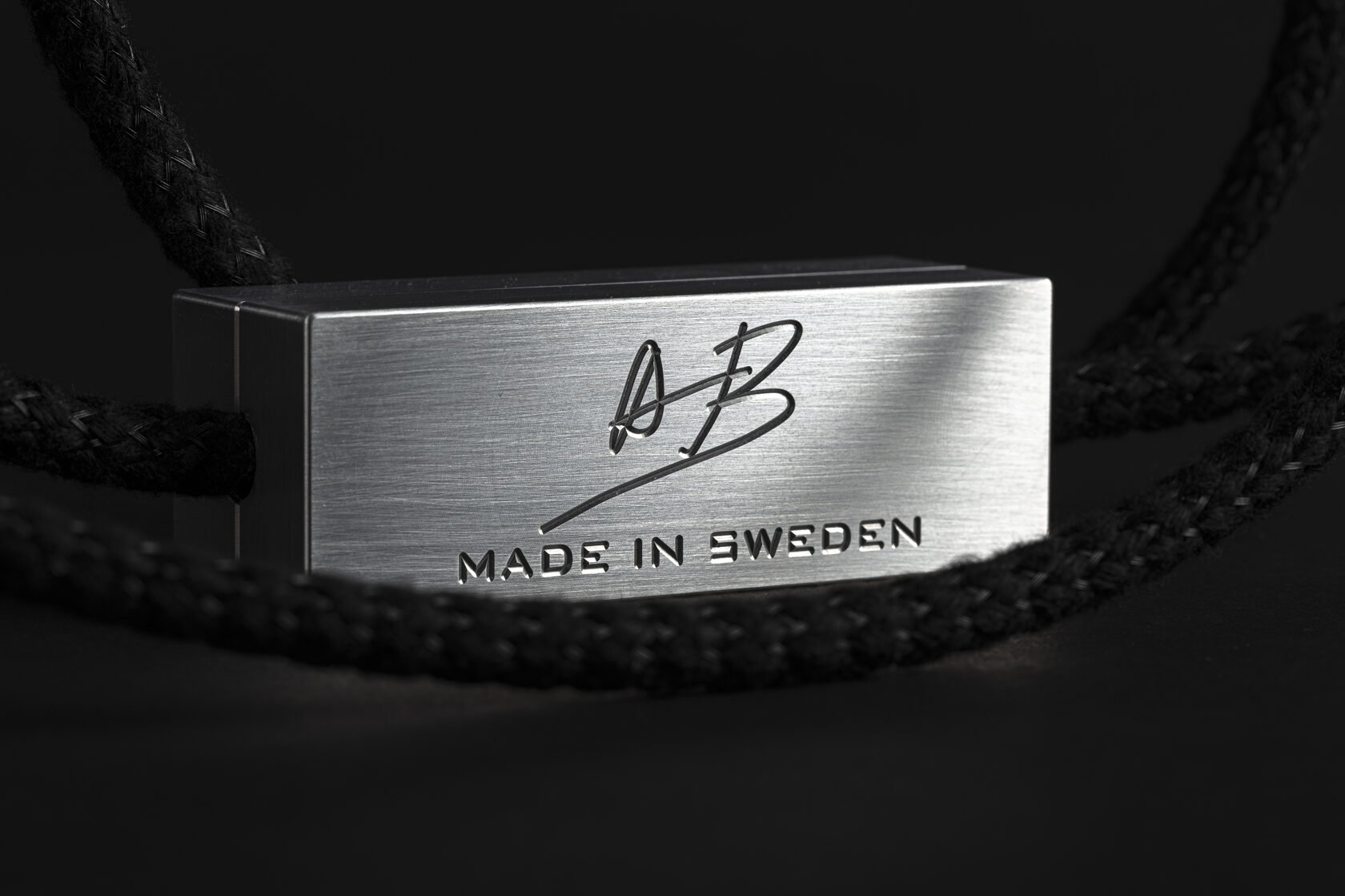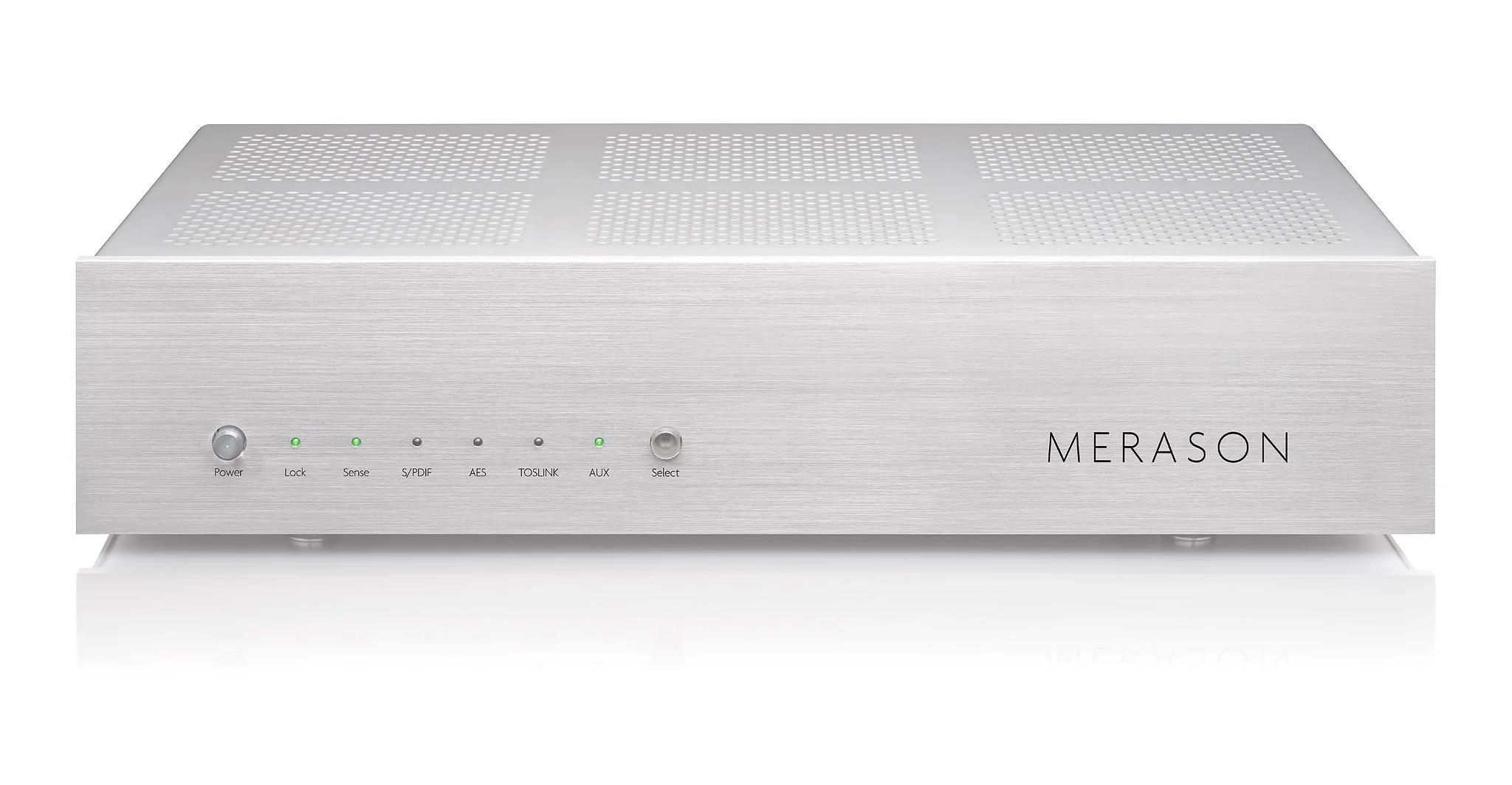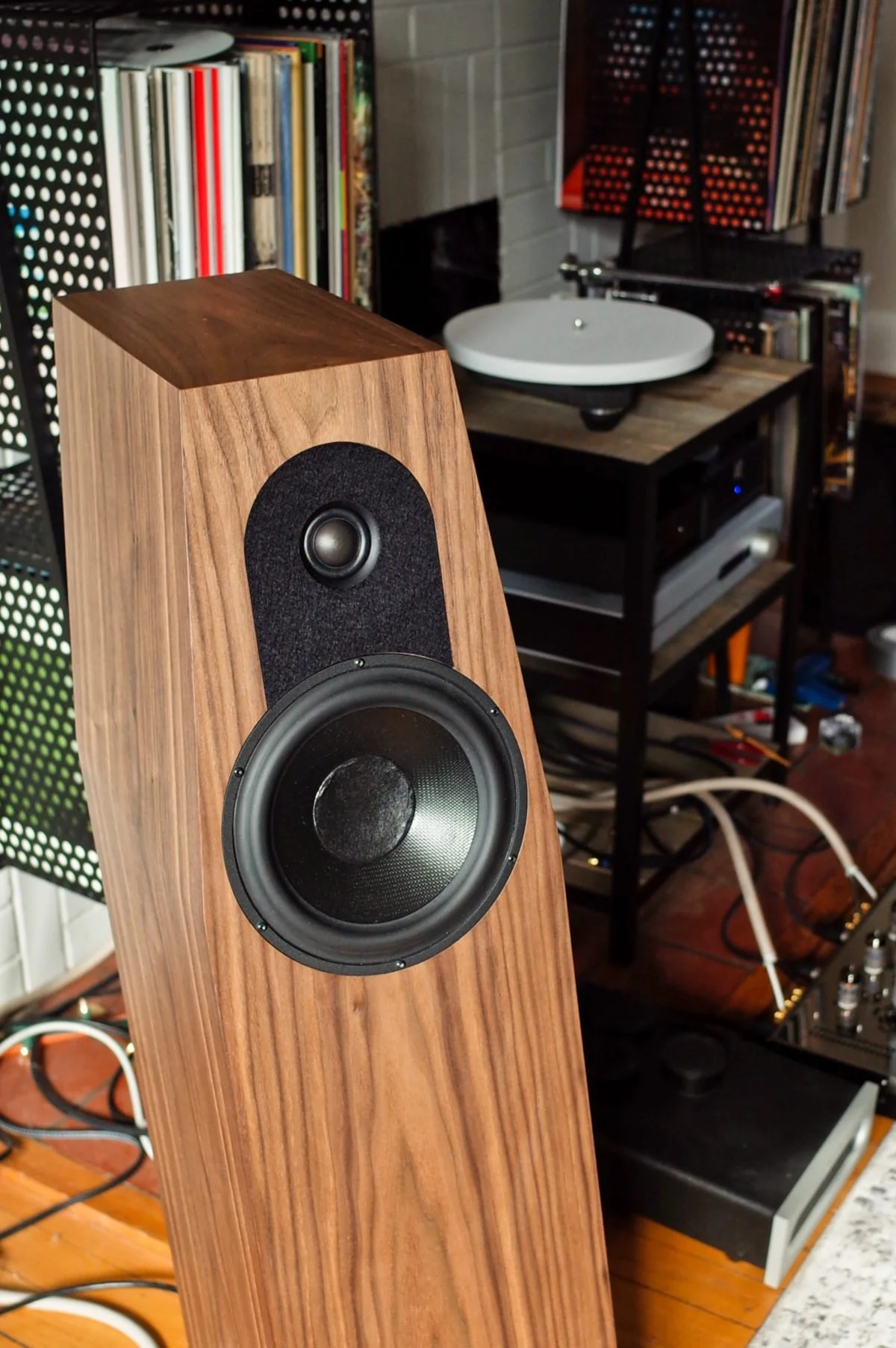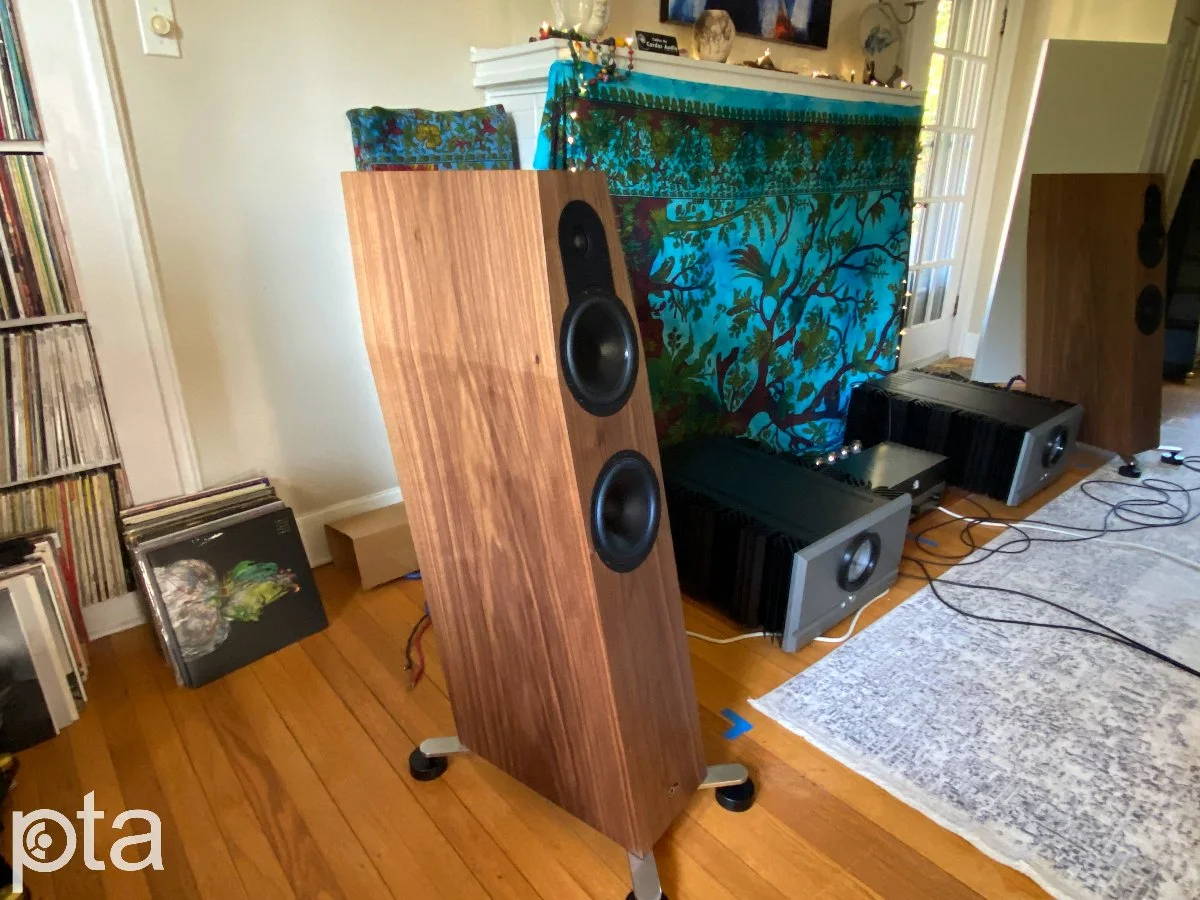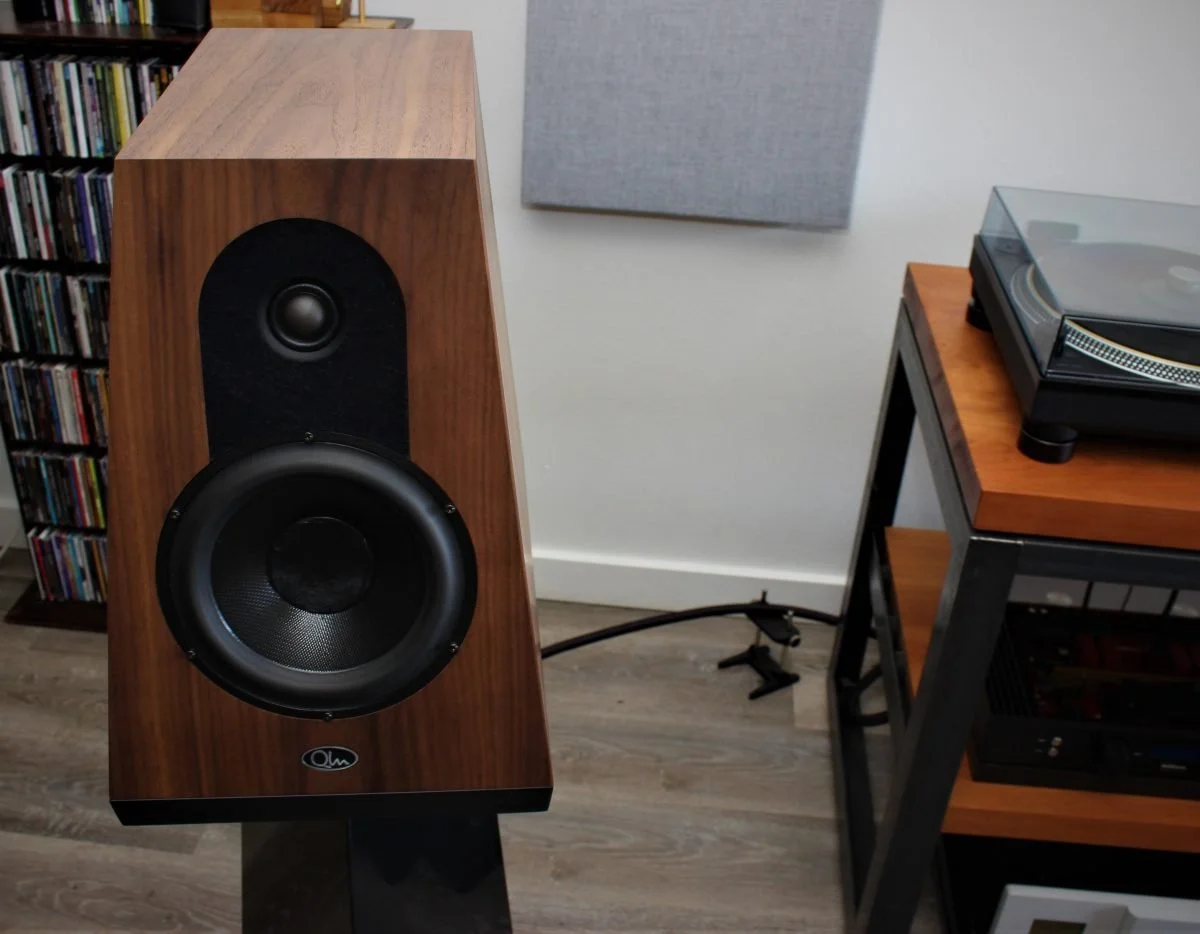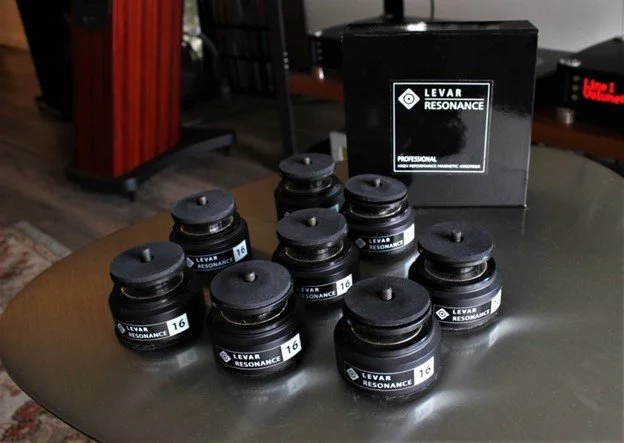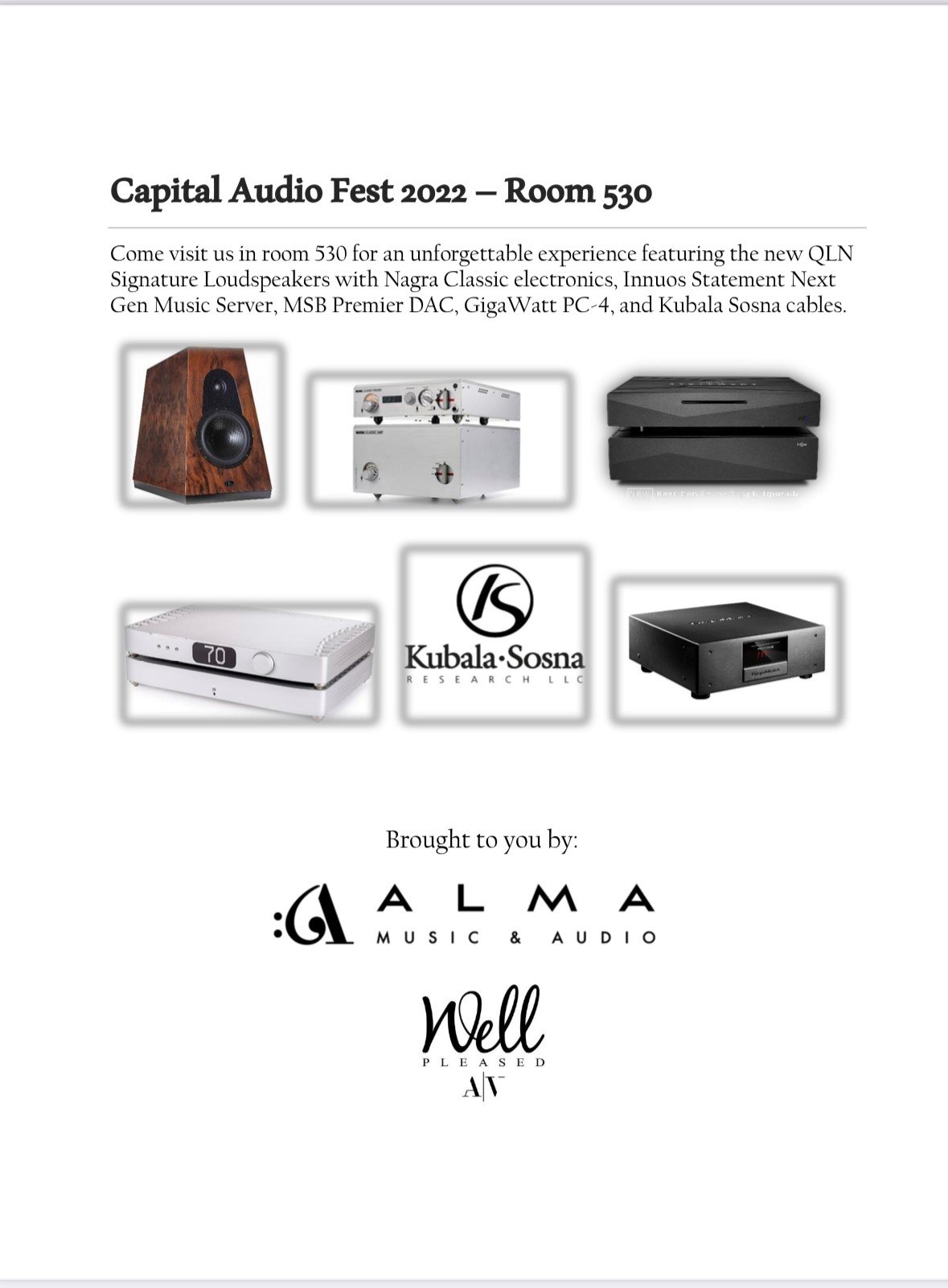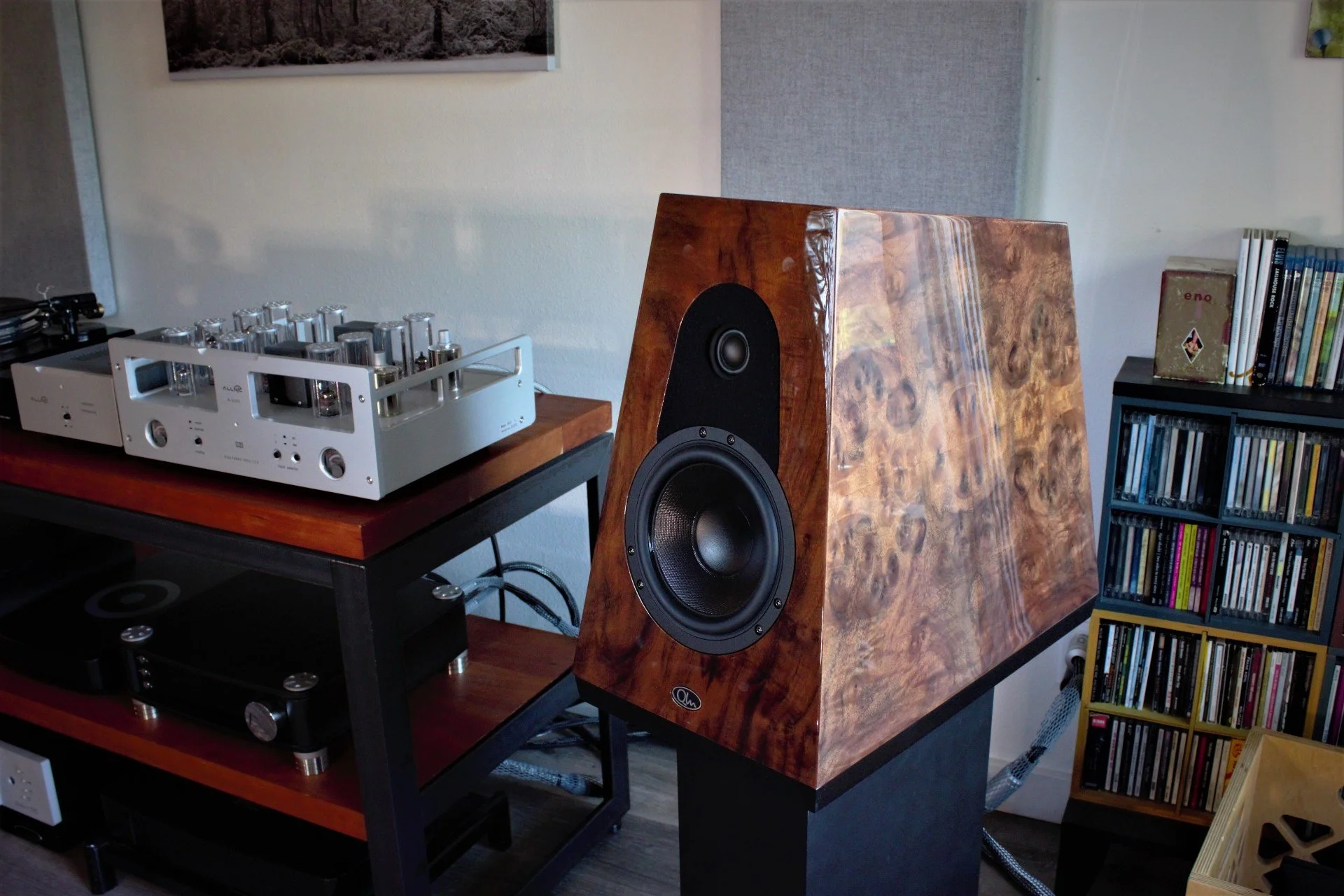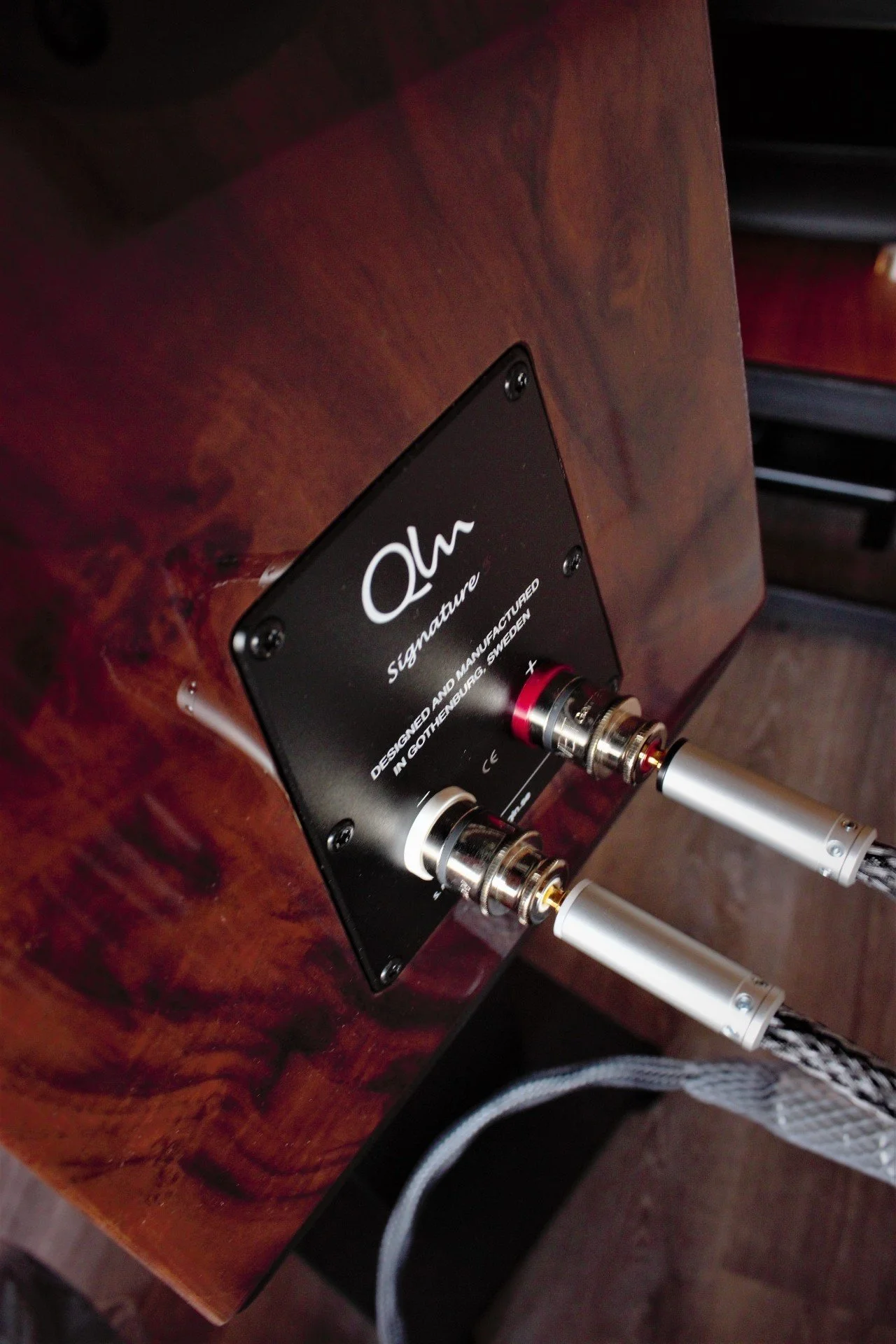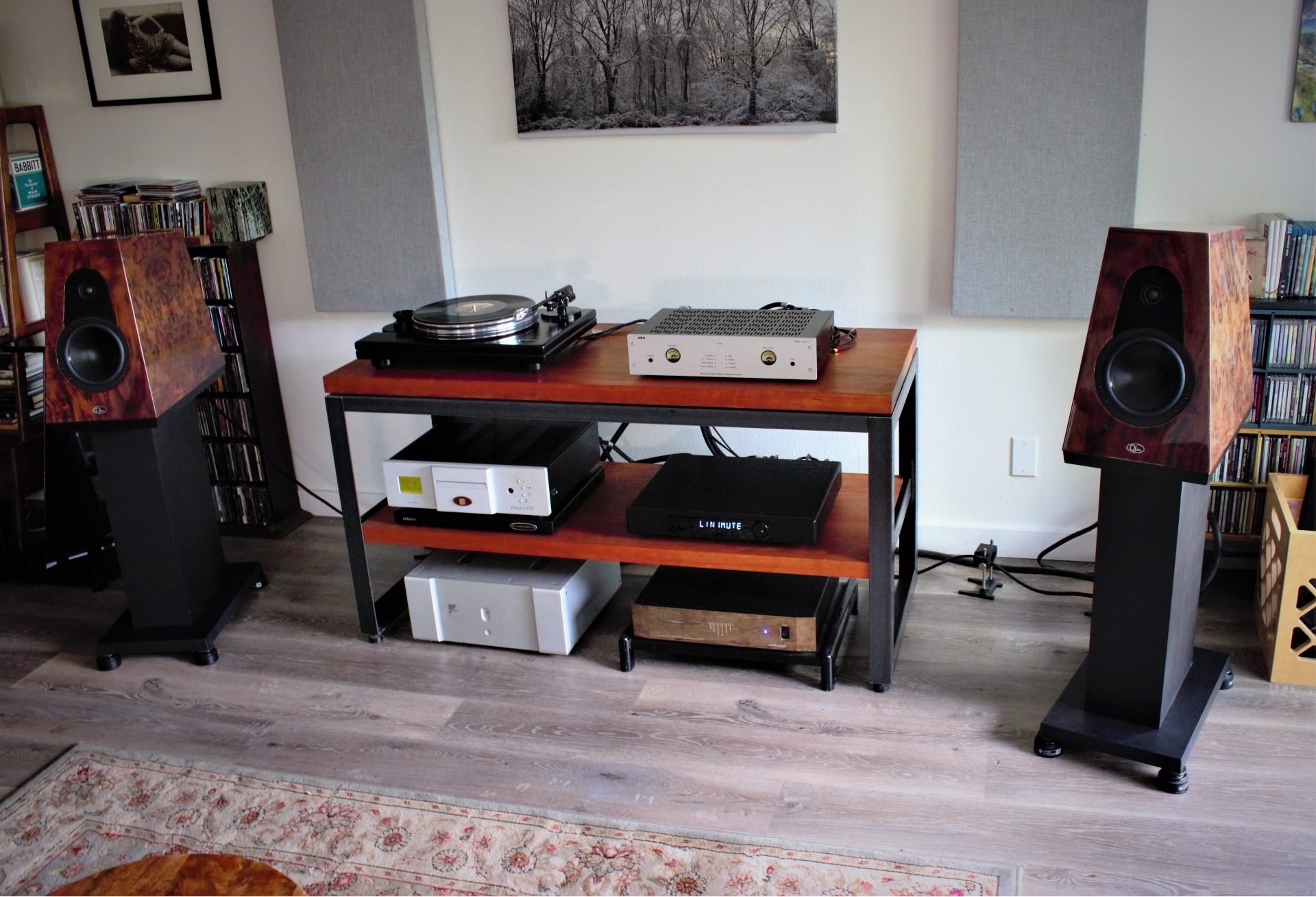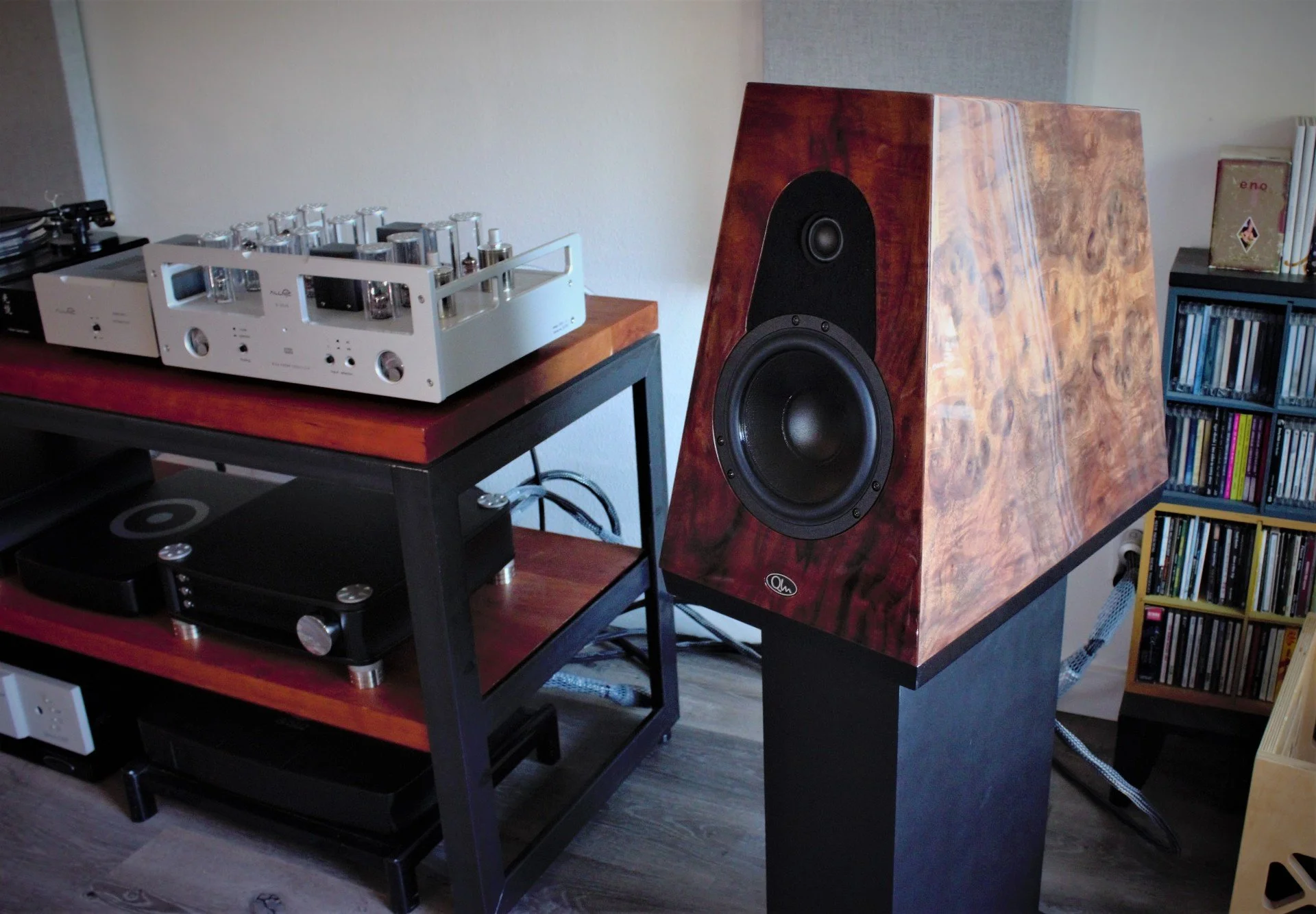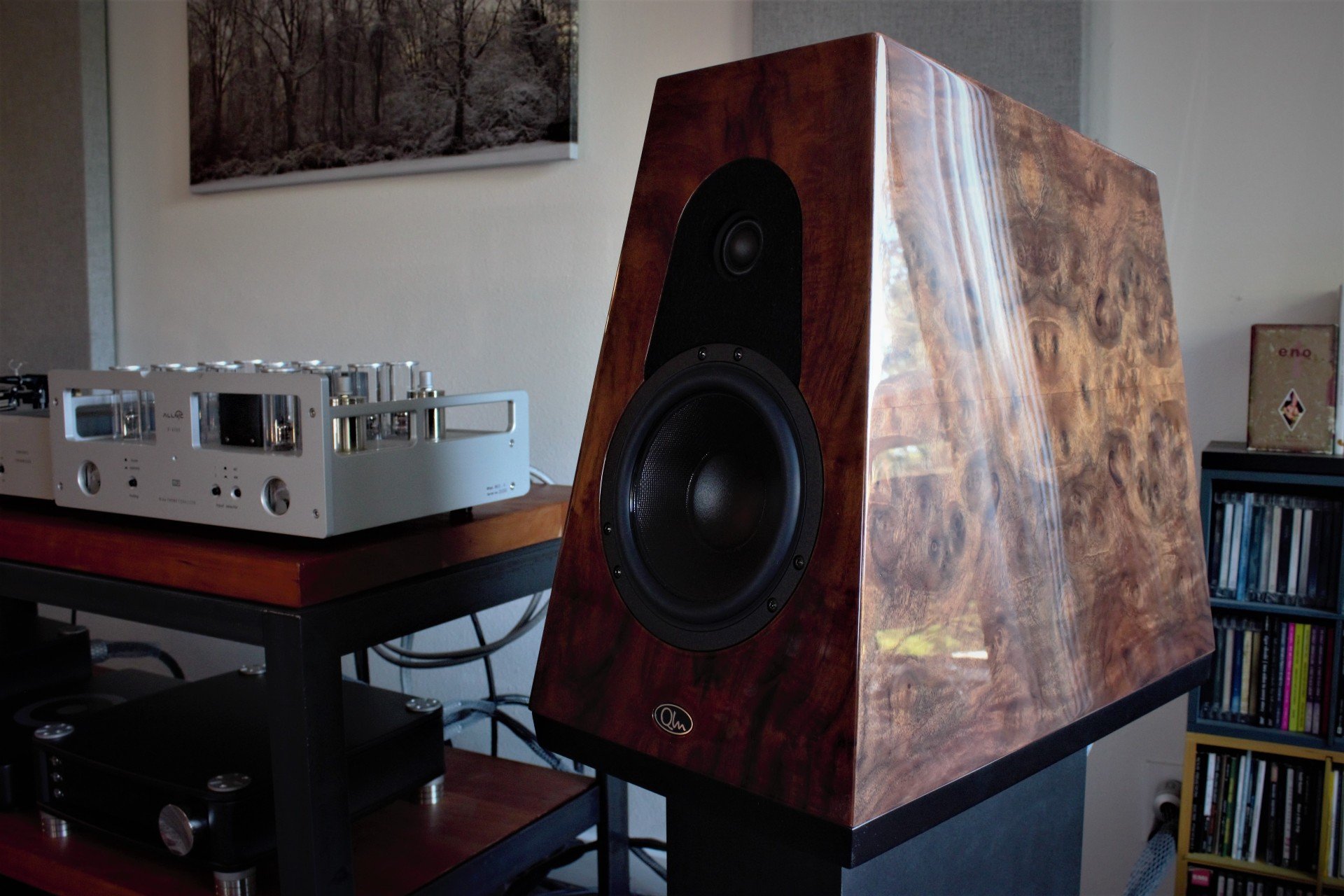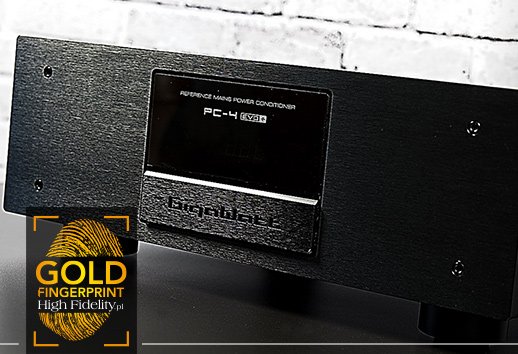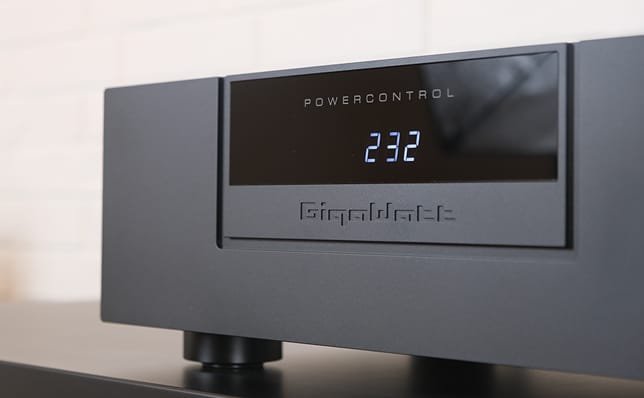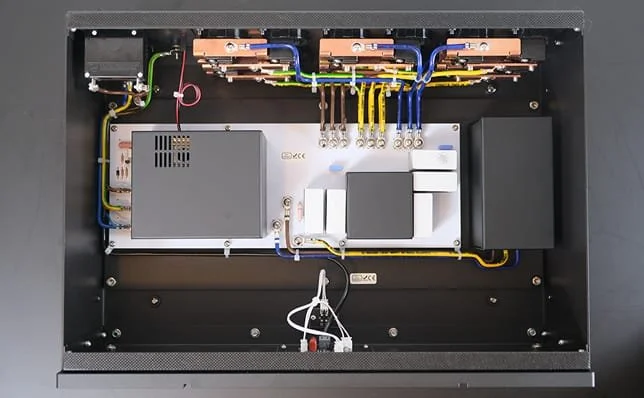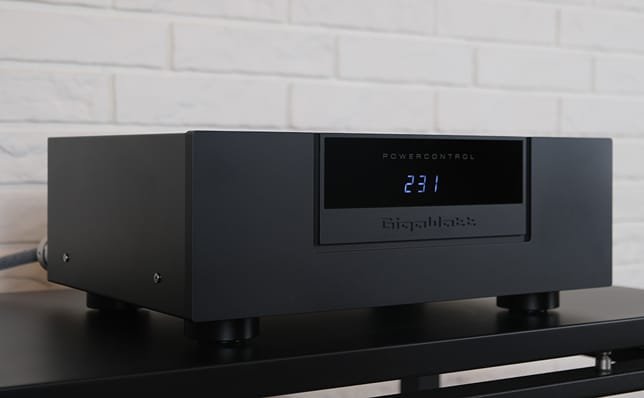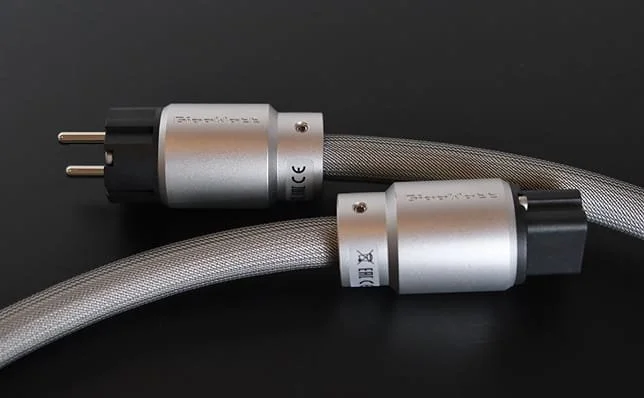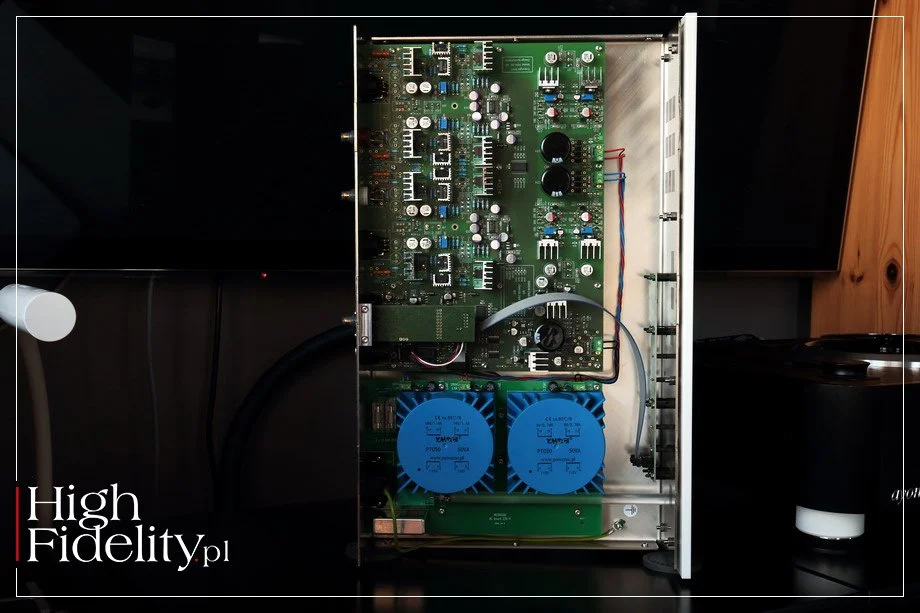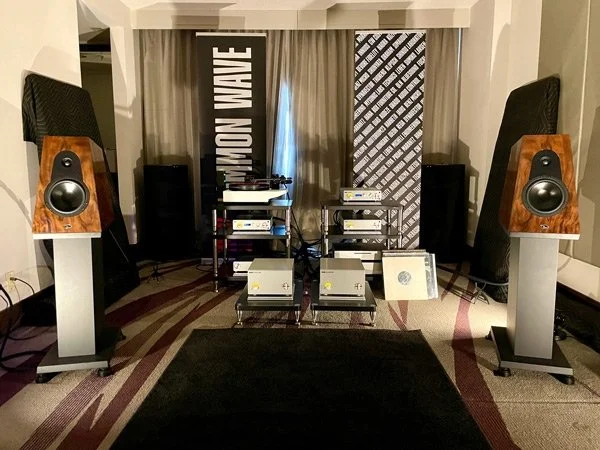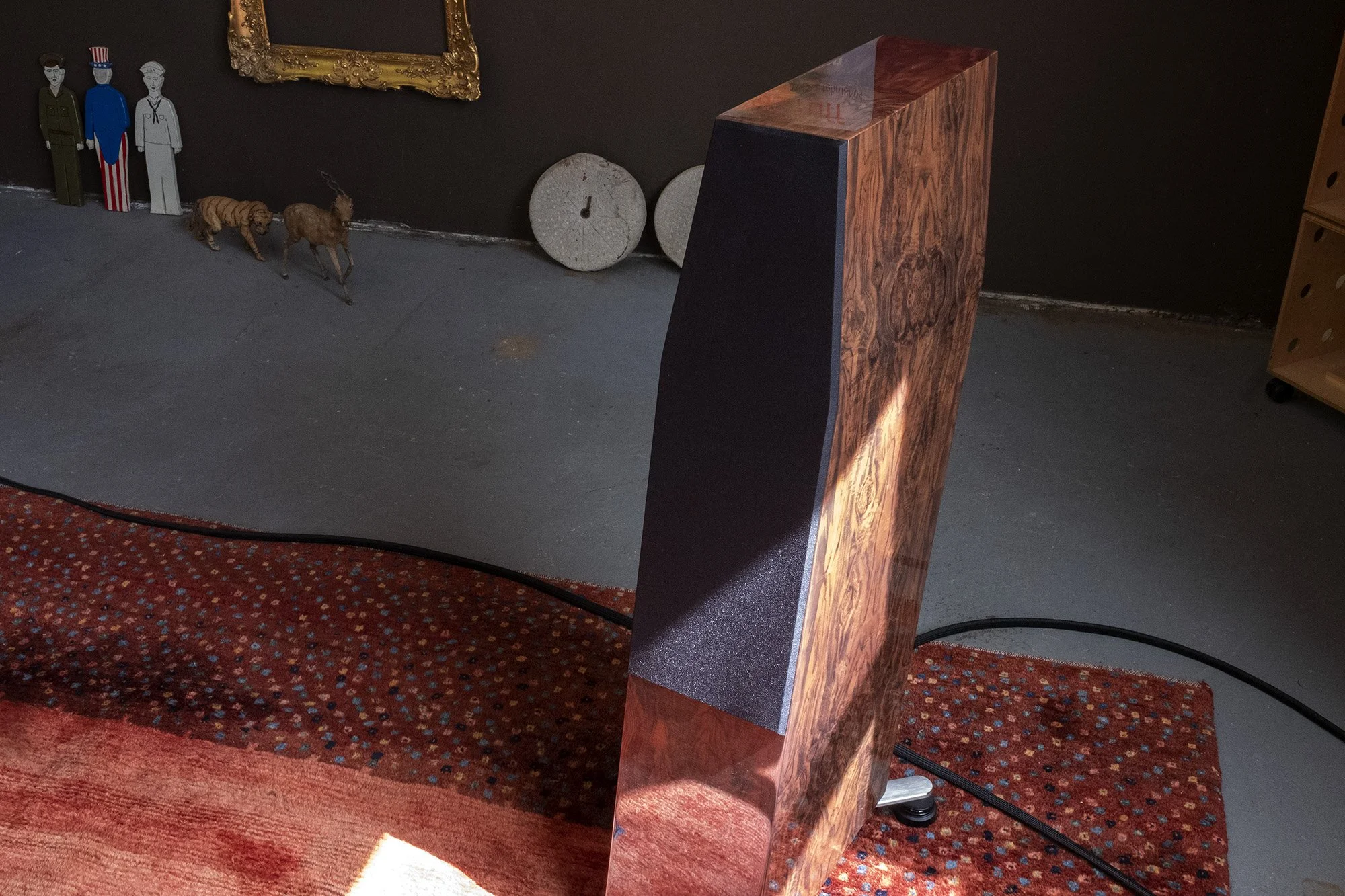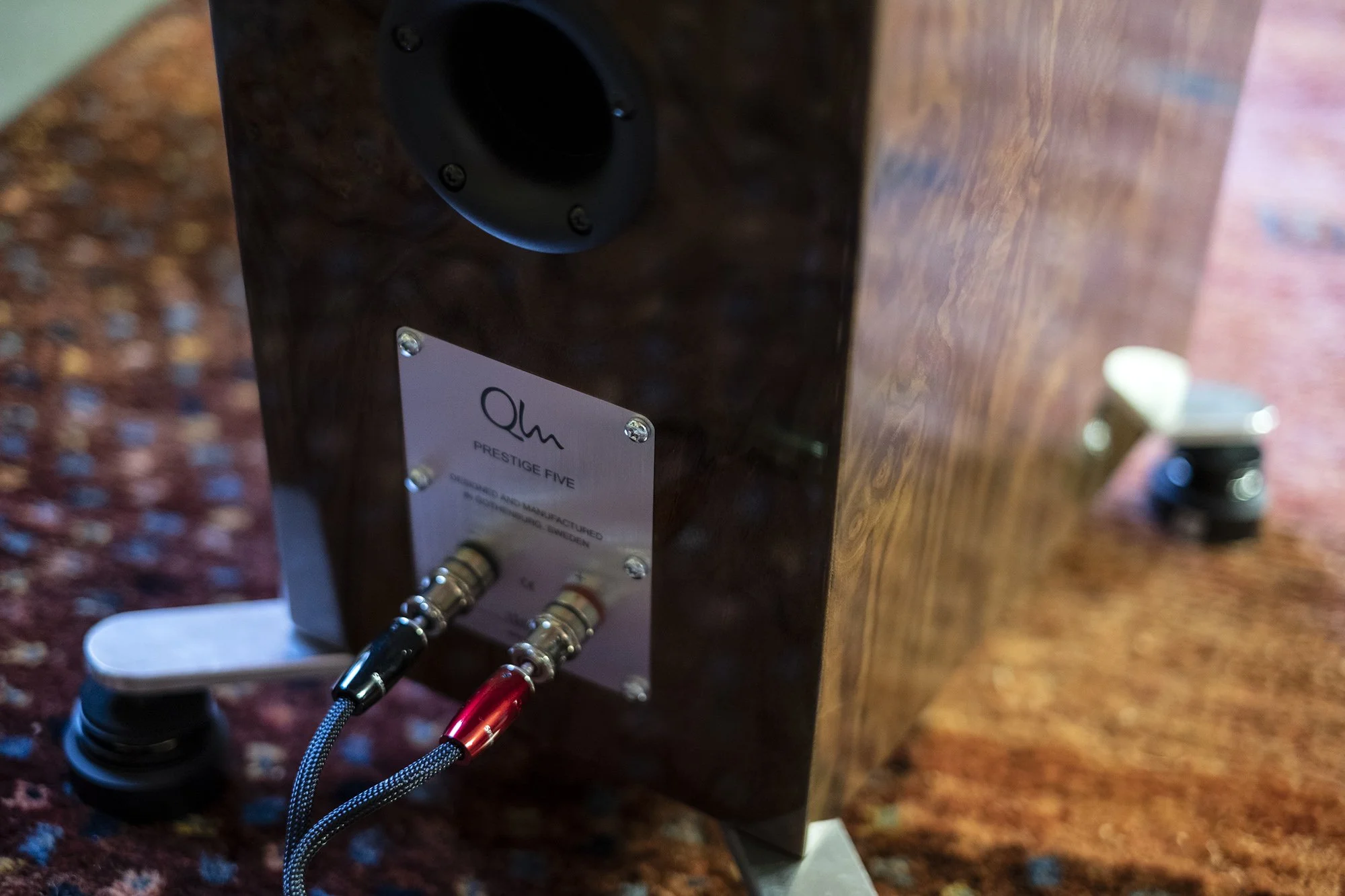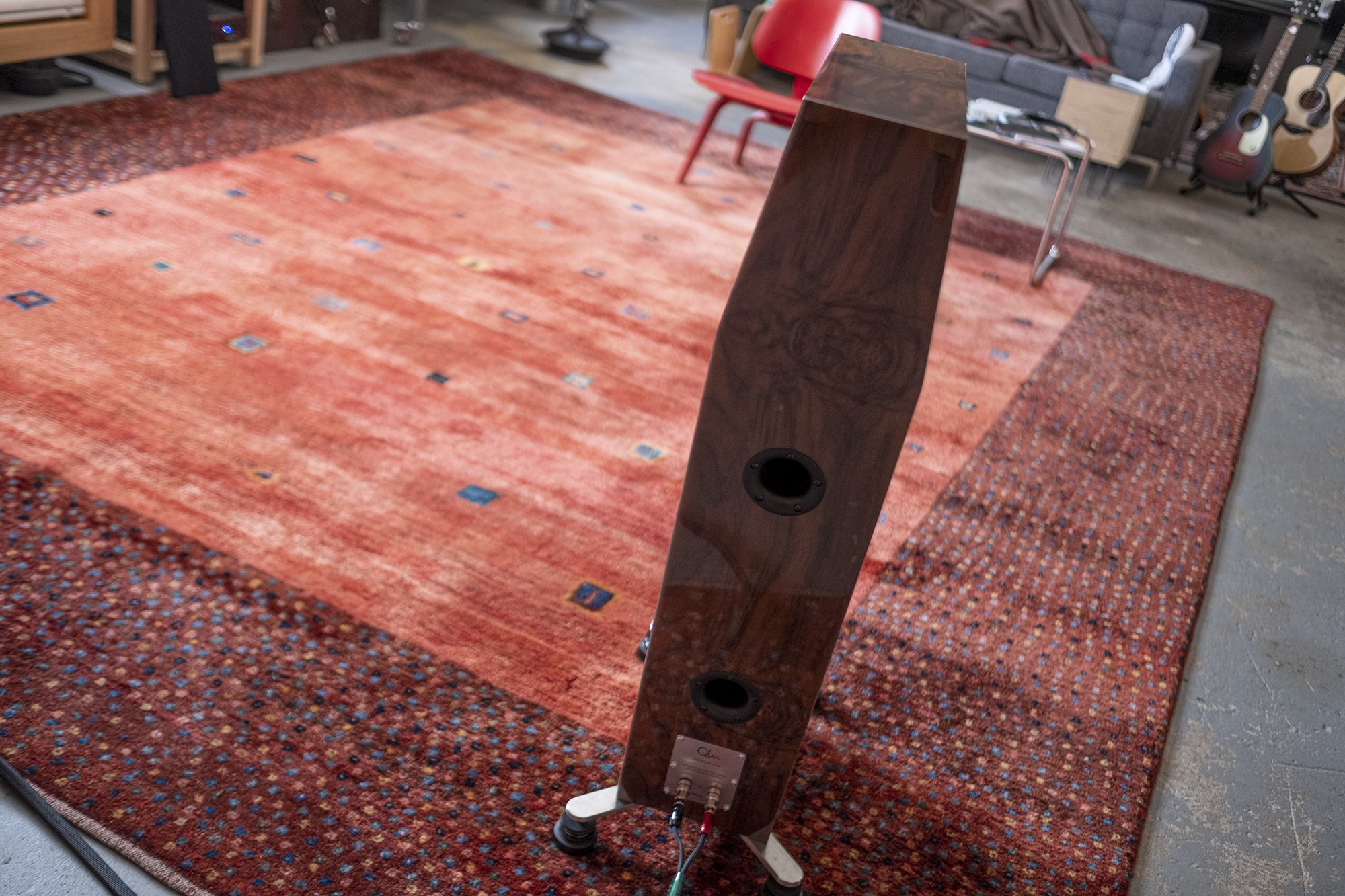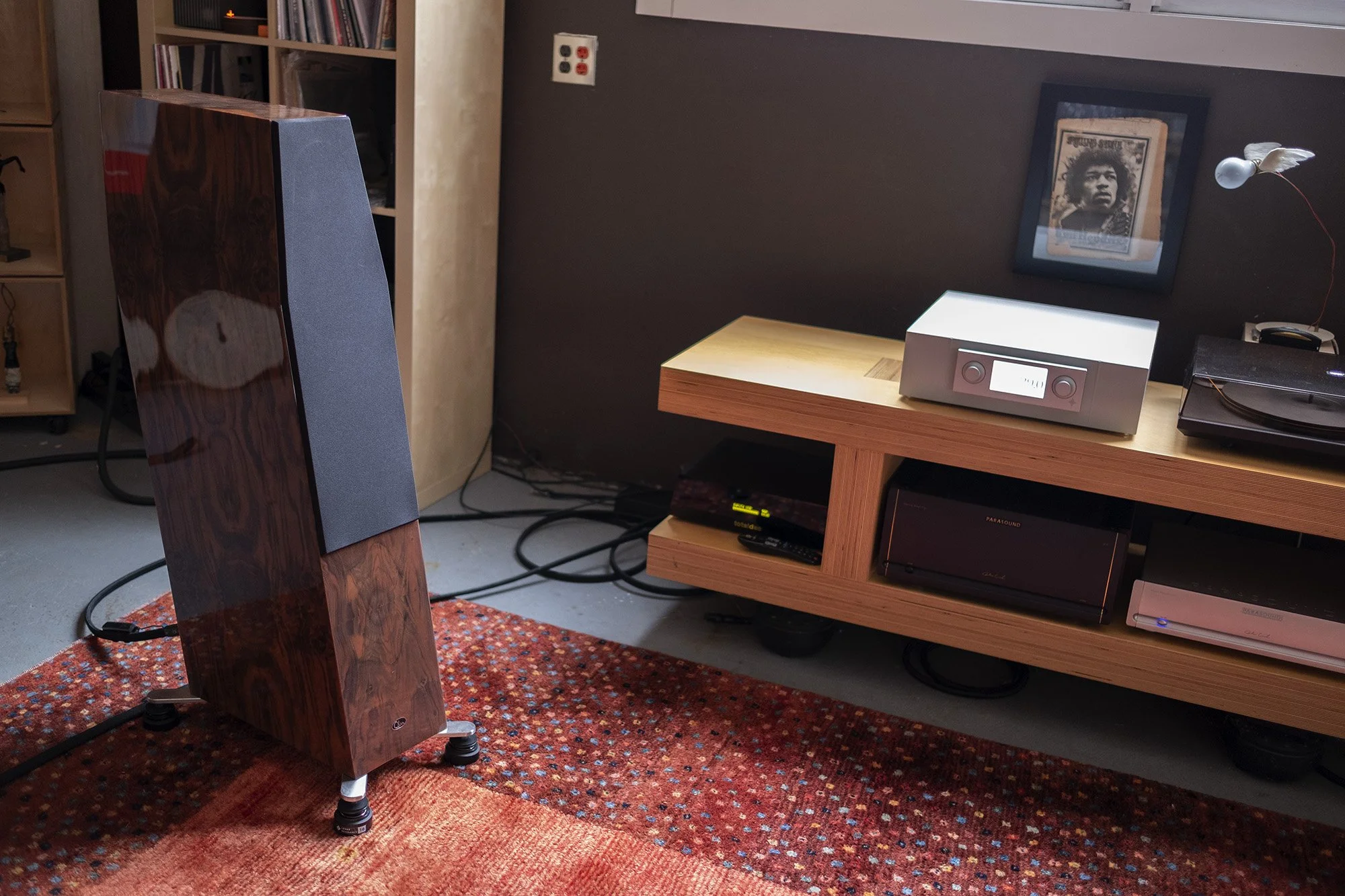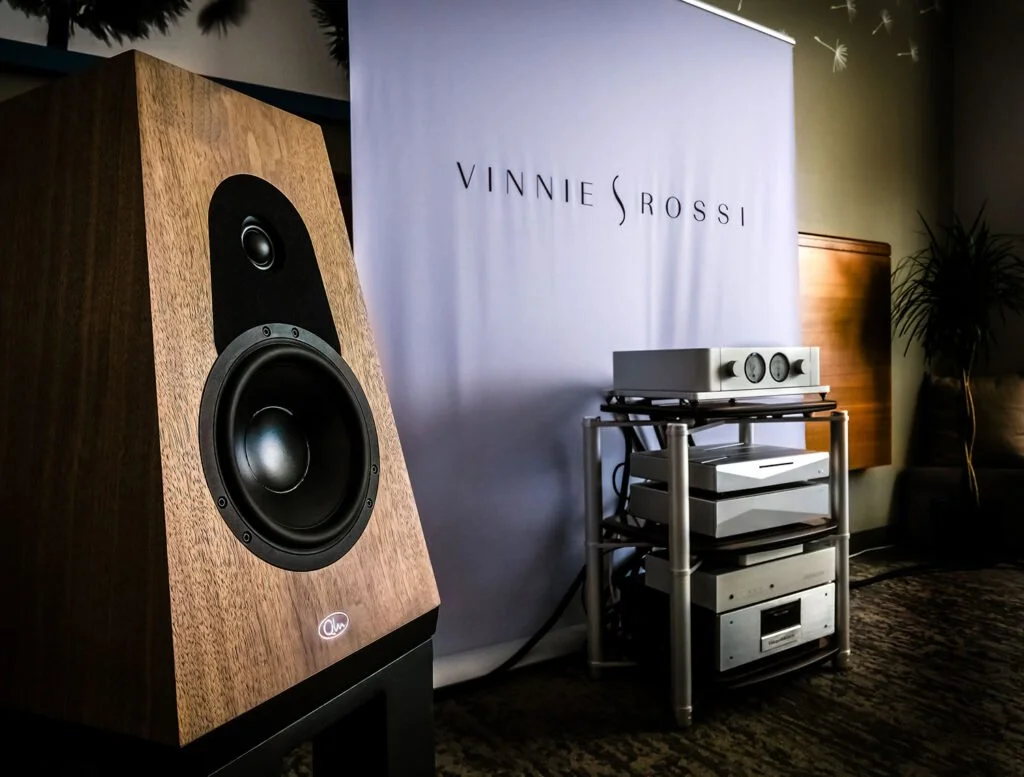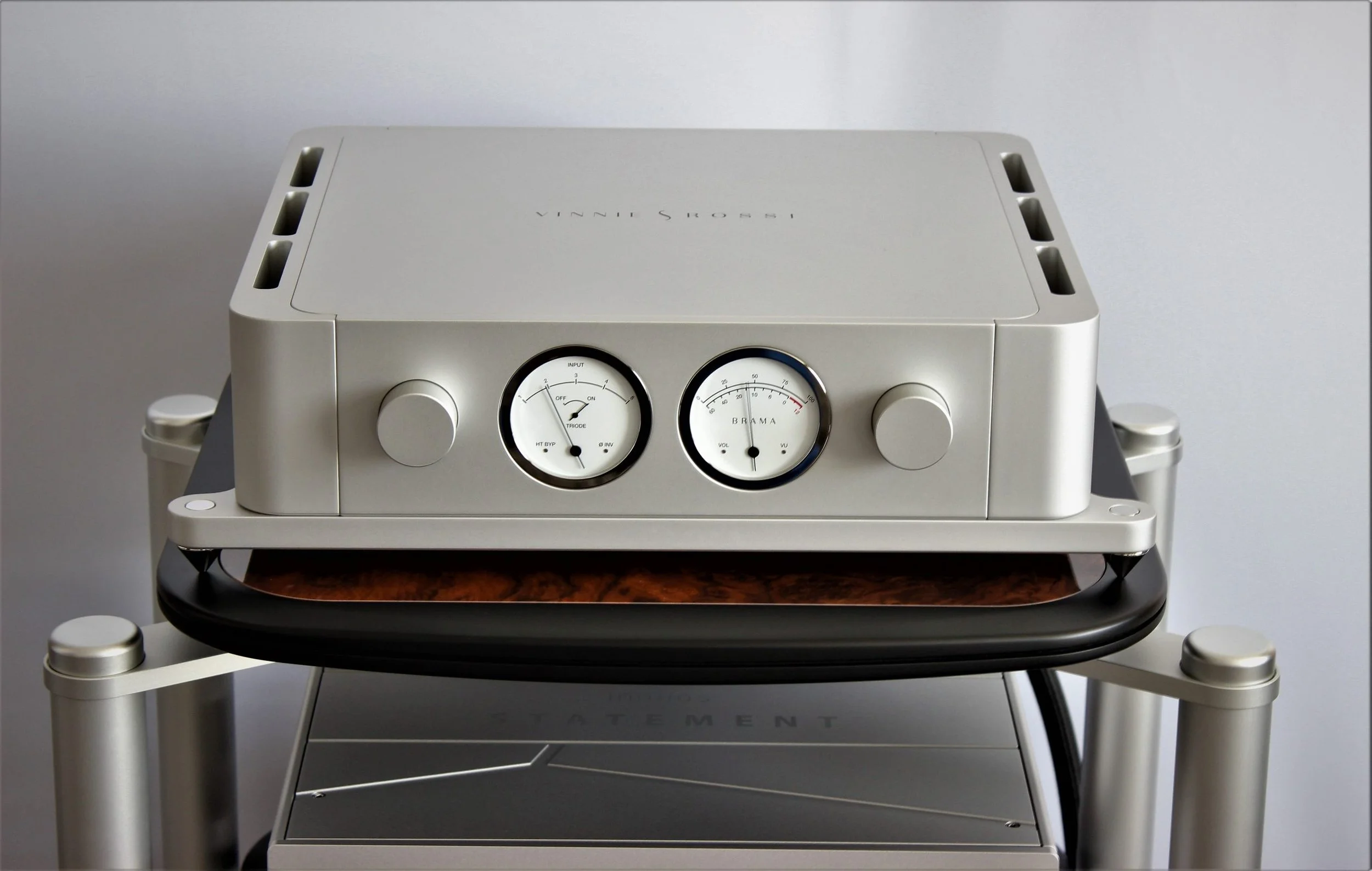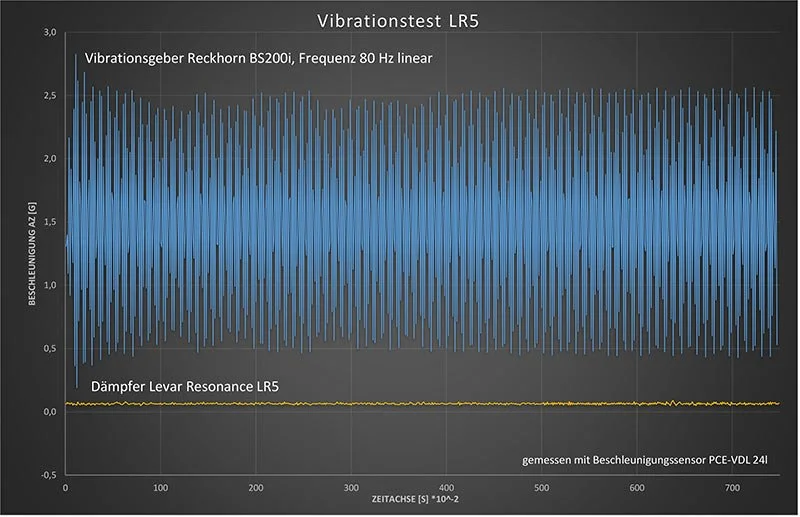Come visit us in room 1426, April 15th-17th to experience a phenomenal system comprised of the new Qualiton a75i, Merason DAC1 MKII, and QLN P3 Loudspeakers. We will be using Innuos source components, Swisscables for cables, GigaWatt for Power Conditioning, and the new AB Tech REN Ethernet Filter. All supported by SGR racks. You don’t want to miss this!!
AB Tech Ren Ethernet Isolator Review - HiFi Knights
“To me, it feels like all other elements that may stand in a way between a recording and the listener (me) are just gone. Everything has its place in this calm, precise, orderly musical experience. And yet it is not one that is often referred to as cold or even clinical one, it is not focused on details, and it is definitely not dry. Quite on the contrary, the sound is beautifully rich, dense, and weighted while resolving and transparent simultaneously. It has a very natural flow, so while the amount of information is incredible, I have to intentionally look for them to realize this remarkable wealth. Otherwise, which is much more natural, by the way, I am engaged, even immersed in an intense, rich, riveting experience with all this information smoothly blending into a bigger whole.”
You can find the complete review here
QLN One review - The Sound Advocate
“Even though the Qln One is the first-tier loudspeaker from QLN, (followed by the Prestige One, Three and Five at ascendingly higher price points), costing $4800 per pair, this marvelous little speaker can outshine many other small monitor designs they may have been meant to compete with.
Besides their overall accuracy and honest “neutrality” they stand out particularly with all types of vocal reproduction, be it pop, rock, or in this case, operatic recordings. They display an inherent and distinctively faultless mid-range with a high end that is sweet and decidedly natural sounding. Big, open, and lasciviously accurate in its stereo imaging, the Qln One will endear itself to the most demanding high-end music lover with its engaging and enduring sound quality. They are highly recommended and deserve an “editor’s choice” rating!”
Find the full review here
AB-Tech - REN - Ethernet Isolator
We are very happy to introduce the AB-Tech line of digital cables here in the United States!
REN which in Swedish means clean or pure is our brand new accessory for high end audio streaming via ethernet.
With this isolator, besides from acting as a filter, both signal and ground are completely galvanically isolated, which means all noise is removed and through comes only music.
In the aluminum body milled out of two solid pieces of non magnetic high grade aluminum which is specially designed to keep out any interferance, the isolator is molded in a vibration dampening material.
The connectors used are specially design for high end ethernet cables and has a die-cast robust zinz housing and high quality latch-protectors.
The cable it self is a high grade cat 8 ethernet cable that is specially designed for noice cancellation most commonly used for medical and military purposes, where noice isolation is just as important as in audio. It feature an aluminum PETP foil around each balanced twisted pair of copper cable. All four pairs are then housed with a special thermoplastic material, and finaly wraped in a custom noice reducing sleeve normally used in aerospace, that also provides a luxurios finish for the listeners eyes. But as you might imagine, the real beauty comes from the sound that it provides.
Please contact us for more information.
New Merason DAC1 MKII
Worb, Switzerland – We are very excited to announce the release of the new DAC1 Mk II D/A Converter. Over a year’s time was spent carefully considering how to improve upon our award-winning design to offer customers around the world even greater musical enjoyment, and we could not be happier with the results (see below). All existing DAC1 owners will have the ability to upgrade their units to Mk II status. The new DAC1 Mk II will begin shipping later this month while upgrades will begin in early February. Please consult with your local distributor for more information.
New Design: The structure and routing layout of the PCB was entirely re-designed resulting in a significantly reduced impedance and loss-free power supply delivery to each individual component. In addition, the shielding against external interference was also greatly improved.
Components: High precision SMD components are now predominantly used throughout the design due to their superior performance characteristics. Unlike the THT parts previously used, the SMD components offer a far shorter component to conductor path resulting in much lower losses. The capacitors in both low-pass filters now have a dielectric made of polystyrene, a material well proven for high performance audio applications.
Thermal concept: New in the DAC1 Mk II is a sophisticated mounting procedure of the power transistors to their individual heat sinks using custom designed disc springs. This intricate method allows for a precisely defined contact pressure, achieving optimal temperature equalization of the paired transistors. This application has dramatically reduced harmonic distortion in the signal path.
Result: All these measures have led to an even wider and deeper sound stage. The dynamics are clearly greater, with the transient speed and attack reminiscent of live music. Although the measured output level has remained identical, one has the impression that the Mk II plays louder with a much quieter background. Micro/Macro details are resolved more distinctly, with new details emerging from familiar recordings that were not previously recognizable. The sound image has become even airier and lighter, with bass now much more weighted and defined. All in all, a converter that plays in a higher league!!
Pricing: MSRP – $8,000
Available now, in silver, black, and cider (champagne)
Part Time Audiophile Buyers Guide 2023
We are honored to have several of our products recognized as some of the best in their respective categories in Part Time Audiophile’s 2023 Buyers Guide! Link here
Qln Prestige Three ($11,000 pr USD)
We’ve been drooling over the Swedish-built Qln Prestige Threes, especially with Vinnie Rossi amplification, for a few years now. Once we tested these floorstanding speakers, we didn’t want to give them back. The Qlns throw up a huge sound, warm and yet crystalline, and you’ll stare in disbelief when you hear these very petite towers in action. We felt they did so many things exceptionally well, that we suggested that many different types of listeners will find them to be “all they need.” An Editor’s Choice winner.
Qln Prestige Five ($17,500 pr USD)
Qln’s Prestige Five, along with the smaller Prestige Three, were so compelling that our reviewer wound up buying both pairs for himself. It’s no surprise that the PTA team is completely enamored with this Swedish speaker manufacturer; so much bass comes out of these still-petite enclosures that you’ll shake your head in disbelief. “Great imaging qualities and dynamic speed with an added something that gets us closer to the music,” we concluded, giving them a Reviewer’s Choice award.
Qln Prestige One ($6,800 pr USD)
This two-way stand-mounted bookshelf speaker from the extraordinary Swedish company competes with many of the finest monitors we’ve heard, and it comes at a price that makes us wonder why haven’t we purchased a pair for ourselves yet. Outstanding, balanced low frequencies in all but the largest rooms. “If you’ve heard the larger Prestige Threes playing at an audio show and you’ve fallen under their spell, you’ll be thrilled to know that much of that magic is present in the Prestige One.” Reviewer’s Choice winner.
Merason DAC-1 ($6,000 USD)
We felt that while there are many excellent DACs out there for around the same amount of money, the Merason is one of the best DACs we’ve heard at any price–so much so that we would still be impressed with it if it was far more expensive. Sonically, it can go toe-to-toe with plenty of the big boy DACs. “What you get is a product that seems to be built for the audiophile that is primarily interested in performance and doesn’t require a lot of fancy features or gold-plated-with-a-screen visuals.”
Merason Frerot with POW1 LPSU ($1,475 USD)
Small, simple and relatively inexpensive for the performance it offers, this DAC is perfect for audiophiles who don’t require a lot of bells and whistles but do want superb sound quality. We found the Swiss-built Merason Frerot to be perfect for streaming Qobuz, and for mating with an equally high-value streamer like the Innuos Zen Mini Mk. 3. Optional Pow1 LPSU ($900), improves sound quality across the board. A Reviewer’s Choice winner.
Audio Hungary Qualiton X-200 ($6,499 USD)
Powered by KT-120s or KT-150s, this integrated has many interesting features that move beyond the usual minimalist designs from Audio Hungary–a built-in phono stage, tone controls and a nice-sounding headphone amp. “Colossal soundstage, glorious midrange, clean highs, and pounding bass,” we decided before handing the X-200 a Reviewer’s Choice award.
Levar Resonance (prices vary)
Capital Audio Fest 2022
Photo Courtesy of Marc Phillips
QLN Signature review - Part time audiophile
Spoiler alert: this isn’t going to be as much of a dry, objective review of the Qln Signature loudspeakers as a feverish chronicle of an all-too-brief romance. If that seems too biased for a high-end audio review, so be it. In this hobby, we often keep our enthusiasms on a short leash lest people think we’ve surrendered that objectivity. I say that if you find something that seems to have been tailor-made to your personal tastes and gets you all pumped up, tell the world.
Let me once again preface this by reminding my critics that I don’t “love everything” and the reason why most of my reviews are positive and end in a solid recommendation is because I often do a lot of scouting in advance. There’s nothing that takes the fun out of this otherwise amazing job quicker than a piece of gear that holds no interest for me and isn’t remarkable in one way or another, and I think both readers and manufacturers know what it looks like when a reviewer is trying too hard to say something positive about said piece of gear. I want it to be interesting to me, because I want it to be interesting to the readers. Otherwise this becomes just a dreary job, like all the others.
But I didn’t just scout the Qln Signature monitors. I stalked them, and for quite a while. I charted their progress through the production channels. I knew how good they were long before they arrived on my front porch. Heard them a couple of times in advance. Wrote about it, too.
Let’s go back to the beginning. After I reviewed the Qln Prestige One monitors a couple of years ago, I couldn’t stop thinking about them. These two-way monitors cost just $6,800 pr USD, and yet I preferred them to some of the five-figure premium two-way speakers I’ve reviewed. That’s troubling since the Prestige Ones have influenced the way I now judge speakers in this price range because I know what can be done for this kind of money. You, my $7,000-loudspeaker-making-friend, have to beat this.
I’m not saying that the Qln Prestige Ones are the best stand-mount two-ways in the world, but if you hand me $7,000 and say go forth and buy a pair of two-ways, I will probably be quick and decisive and give Mats Andersen of Qln and Mark Sossa (of Well-Pleased Audio Vida and the Sales Manager for Qln) a quick phone call and tell them I’m ready to pull the trigger. But what if Mats Andersen did decide to build the “best” two-way that he could, something that goes far beyond the remarkable Prestige Ones? Just before my review period started with the P1, I was told that Mats was working on the latest generation of his original Signature monitor, which was the Qln flagship model for a long time. (Remember, Qln has been around since the ‘80s.) Best part: when it was ready, I’d get a chance to review it.
Here we are, all caught up. But this recent refreshening of the Qln speaker line was, at first, tough to sort out. The original Signature model actually looks a lot like the Prestige One—a truncated pyramid, basically. The original Prestige One, in fact, was just a rectangular box with all right angles. When I first opened my review pair of the Prestige Ones, I thought they were the new Signatures with that same geometric shape. That’s when I realized that I hadn’t even seen an image of the new Qln Signature yet. No one had.
Once I saw them in the flesh, at AXPONA, everything made sense. While the Qln Signature loudspeakers bear a strong resemblance to its siblings in the Prestige line, they make a strong first impression with their size, shape and the quality of their fit and finish. There’s no mistaking that this elegant and substantial monitor is designed to sound like a much bigger speaker, one with few limitations.
I know, that’s another expectation I had about the Qln Signature monitors. Still, I felt the electricity in the air when we first met. The chemistry was undeniable. And it helped that they looked hawt.
Qln Signature—the Meet Cute
Oh my God, is that them?
When I arrived at AXPONA 2022, my top priority was visiting the room where the Qln Signatures were ready, along with the Vinnie Rossi Brama integrated amplifier, to make their public debut. They looked amazing, a Qln through and through in terms of shape, drivers and finishes, but really, really deep. That depth, in turn, makes the Qln Signature look absolutely huge in comparison to the Prestige One, even though they look very similar when both are faced straight on.
Also, there are no right angles in this enclosure. You still have that truncated pyramid shape of the P1, but the top of the cabinet slants down so there are no parallel surfaces creating standing waves and other sonic mischief. That also adds to the perception of depth.
How much do they cost?
There was a time when that question made me cringe, because that’s always the first question someone asks when they’re exposed to a high-end audio product. We have a couple of writers at PTA who never talk about price tags—I gotta chase them down for the price before publication because the angry comments will be immediate and numerous if I don’t. But I was interested in the final MSRP of the Qln Signature for a couple of reasons. First, the PTA staff constantly talks about Qln, and we all made our guesses about the MSRP of the Signature. Second, I wanted to know if the price was within my reach, because…well, it’s a Qln, that’s why.
The final price for the Qln Signature monitor is $22,000 per pair in matte walnut (the pair I heard in AXPONA), and $24,000 per pair in the breathtaking gloss walnut burl (the pair I saw in Munich, which is the pair I wound up reviewing). The dedicated stands will be an extra $2,000 per pair. That’s significantly more expensive than the three-way floor-standing Qln Prestige Fives at Dave McNair’s house.
I asked Mats Andersen which model he liked better, and he was a kind and fair father when he said the P5s go deeper in the bass, but there was something very special about the Signature that goes beyond frequency response. To this day, I still haven’t listened to the Prestige Fives.
The Qln Signature uses a custom 7” Kevlar driver from Scanspeak and an Illuminator tweeter from the same source. Mats told me, back in Munich, that he prefers using “soft” drivers—as opposed to metal or ceramic—because they provide the sound he wants. These drivers from Scanspeak are custom-made for the Signature, however:
“The Qln developed coated Kevlar® bass/midrange driver with under hung magnet system (where the voice coil is in the magnet gap all the time) forms a completely linear motor system. This allows for open air flow without any compression or turbulence resulting in micro details and absence of acoustic noise found in normal basket designs. A built-in copper ring in the magnet system offers symmetrical drive, and lower voice coil inductance producing higher dynamics in the midrange while also suppressing intermodulation distortion. All these technical innovations result in astonishing micro/macro dynamics from a 2-way speaker design.”
The first couple of times I heard Qln speakers, I wondered how Mats Andersen achieved such a rare and beautiful sound from a seemingly conventional enclosure and driver complement and I might’ve mentioned something about fairy dust to Mark Sossa. He replied that it’s all exceptional engineering and attention to design. When you look at the Qln Signature and what’s inside, you’ll start to appreciate the thoroughness of its creator.
Mat Andersen’s constant impedance crossover has been redesigned with non-inductive capacitors, and the internal cabling uses pure copper core that’s manufactured right there in Sweden. Parts quality is extremely high—copper film caps, precision metal film resistors and WBT Nextgen binding posts with silver-plated copper. The enclosure itself is made from QLN’s proprietary Qboard material, which eliminates “structural resonances in the acoustic chamber.” The slanted baffle allows time alignment of the drivers. Every step of the way, Mats is finding new ways to eliminate noise.
Finally, let’s take a look at the Qln Signature’s numbers: 87 dB sensitivity at 8 ohms, a frequency range that goes down to 38 Hz (down 3 dB), seemingly ordinary numbers for an extraordinary transducer. The number that wound up meaning the most to me was the weight—31 kg, almost 70 pounds. They’re two-way bookshelf monitors, but just barely. Lift with your legs.
Qln Signature—the First Date
When the Qln Signatures were first installed, they were connected to my Pureaudio Control preamplifier and an older Ayre V-3 power amplifier I’ve borrowed. That was a superb match, with just the right amount of warmth—a “getting to know you” kind of warmth that may have been a little reserved in tonality but still hosted a very entertaining party at the frequency extremes. Then I moved to the Bel Canto Design e1X integrated amplifier, a powerful class D “almost all-in-one” with an inboard phono stage and DAC/network streamer. I had nearly everything I wanted sound-wise, coupled with a dizzying array of source options that prompted many a late-night listening marathon.
Then the Aavik and Ansuz equipment arrived—the Aavik U-280 integrated with built-in DAC, the Aavik S-280 music streamer, the Ansuz ethernet switch and power distribution, and plenty of Ansuz cabling from speaker cables to interconnects to power cords to USBs to ethernet. If you’ve read about my recent visit with Audio Group Denmark, you’ll know this gear is very different than most in its approach. For example, each of the three brands in AGP (Aavik, Ansuz and Børresen) focus on reducing inductance in the signal path in order to reduce the noise floor. These pieces created such a profound silence around the music that every other component has its nature revealed, warts and all.
At first I wondered who would win—the utter neutrality of AGD, or that warm and intoxicating Qln dreamscape. Turns out, the Qln Signatures were more neutral than I thought. As I mentioned, Mats is focused on reducing noise and unwanted resonance, and that’s totally aligned with the AGD approach. I could still feel the Signatures’ serenity and poise within the AGD-dominated system but pulled in a little closer to the sweet spot. Hearing this combination thrive, with the support of the other, truly reinforced that idea of warmth and detail being totally compatible. Depending upon the music, I could focus on the tiniest details or drift back and lose my focus and get lost in the music.
Finally, the Qln Signatures have those dedicated stands. (Mine were prototypes of the final version, by the way.) With that massive weight, they need them. I was able to use the Acora Acoustics SRS-G stands on the Prestige Ones and they took the low frequency performance to the next level. But the Qln Signatures are so large, especially on the bottom, that the top plate for the SRS-Gs seemed like a precarious solution for such a robust monitor. So Mark Sossa sent me the stands for the Signatures, along with some additional magnetic damping footers to try from Levar Resonance.
Yes, I said magnetic damping footers. That means the Qln Signatures were actually floating on a cushion of air, which is okay since the Levars are self-leveling. Mark sent me the 16s—a set of four will handle up to 52 kg. (Other models from Levar handle up to 200 kg.)
Installation was a brief white-knuckler until the Levars settled in and self-leveled—the entire structure was a little wobbly and the Signatures, as I mentioned, are not light speakers. Eventually the footers stabilize, and that’s when I stopped worrying. The Qln Signatures undoubtedly sounded better on the Levar Resonance 16s than on the nicely-finished stock footers supplied by Mats Andersen. Low frequencies had greater force, as well as greater focus, and I heard more detail. While I’d still be careful not to bump the stands with my hindquarters, I would choose the Levars with these stands without hesitation.
Listening to Music…Together
You know when you first meet someone you really like and it seems like you have so little time to tell them everything you want them to know? With the Qln Signatures settled in, it was almost a race to see how much of my favorite music I could play through them. The Aavik U-280 and S-280 allowed me to stream like a demon through my musical history (as did the Bel Canto Design e1X before it), and these were days when notes weren’t scribbled down and personal hygiene was briefly suspended. But you know what I mean. I felt like I was hearing the best version of many of my favorite tracks, and time was running out.
Plenty of new releases were given the Qln treatment. Nica Carrington’s Times Like These is a rather natural choice where we have a jazz singer with a tremendously expressive voice, just a hint of dryness in the chest to add a little character, backed by a stellar piano trio. I’ve heard a lot of contemporary jazz recordings that fit this description—female voice, intimate jazz, covers from the Great American Songbook—but this recording is exceptional, and somewhat warm on its own.
This is where the concept of warmth, Qln style, comes into play. I didn’t hear warmth layered upon warmth. The music was still balanced, clear and still seductive. But remember how I mentioned that touch of dryness in Nica Carrington’s voice? With a lesser speaker in the mix, you might think you were hearing a speaker that was slightly dry in the midrange. The Qln Signatures, however, let you know clearly that this comes from the singer’s heart and soul and vocal cords. It’s honest and real and still mesmerizing.
Another revelatory listening moment was provided by Kane Mathis’ extraordinary Geminus album, where he leads a jazz trio with a kora and an oud. It’s an exotic, dense sound that shoots out from the speakers and lands all over your body and gives you goose bumps. This isn’t a knock on the dispersion characteristics of the Qln Signatures, or that they’re not ideal for off-axis listening, but I was playing Geminus one day and I rounded the corner into the listening room, taking a few steps until I was in the sweet spot, and I experienced one heck of an adrenaline rush as the soundstage quickly focused and took its shape. There was such a profound change in the sound after just a few idle steps that I was reminded of all those times when I walked into a room with Vinnie Rossa amps and Qln speakers and melted when I heard how deep that soundstage ventured far beyond the rear wall, and how everything within that vast space is focused and smiling at me.
The Qln Prestige Ones captured a lot of that feeling, but I also felt that the Vinnie Rossi amps must have been supplying that extra spellbinding 3-D landscape. The Qln Signature, however, didn’t need as much assistance to reach that lofty sonic goal. Yes, I’ve heard the Signature with the Vinnie Rossi Brama integrated amplifier, and it was one of the finest hours I’ve spent in an exhibit room at a high-end audio show. I was finally achieving that wonderful sound in my home with the Qln Signatures, and I was doing it with class D amplification.
Qln Signature—the Sad Goodbye
Can you tell I loved the Qln Signature monitors? I did. But after listening to such an exquisite, powerful and lovable transducer, one that provided nearly everything I could possibly want from a two-way “bookshelf” monitor, questions are raised about the Qln Signature’s place in the loudspeaker hierarchy. I hate making comparisons like that because they’re usually so fraught with error, but I did have several people ask me how they compared to the Vimberg Amea—our 2020 Product of the Year and my choice, at the time, for the finest two-way monitor I’d heard up to that point. In addition, I have all that seat time with those expensive yet mind-boggling little Borresens—the Z1 Cryos landed at my home as the Qln Signatures were getting boxed up and sent to the 2022 Capital Audiofest.
At this point, there are probably less than five two-way monitors I’ve heard that truly sound like a large floor-stander. The Ameas are one, the Borresens are another, and now we have the Qln Signatures. (I’ve just noticed that Germany, Denmark and Sweden are all very close together. Hmm.) While many audiophiles generally look down their noses at two-way monitors in terms of achieving state-of-the-art sound, they do so without a blindfold. The Qln Signature monitors are a wake-up call to that type of thinking.
The Qln Signatures make no apologies. They sound big and full and detailed and warm and once again I’m not so sure I need anything more to be happy. There is a question of how the Signatures would perform in a huge room, but I don’t have a huge room. I have a normal room and the Qlns reign supreme and ask nothing of me but my undivided attention. Which they have. Highly recommended.
GigaWatt PC-4 EVO+ - Highfidelity.pl
“I’VE STATED THIS MANY TIMES - I am not a fan of the super-audiophile, meaning: highly analytical, hyper-precise, revealing every weakness of every recording presentations. I am looking for a sound that reminds me of the one I know from live performances - with its high energy, being engaging, invigorating and seductive. The GigaWatt PC-4 EVO+ ‘21 brought the sound of both my and the alternative system closer to the expectations defined in this way.
It provided excellent dynamics and control of a highly resolving, energetic, but also saturated, smooth and fluid sound. With each good recording, it allowed the system to render a highly engaging, emotionally rich musical spectacle, at the same time ensuring that even a picky, demanding audiophile with other than my expectations had nothing to complain about.
Long story short: the flagship GigaWatt is the best conditioner I have had contact with, it is simply a top class product! So no matter how high-end your system is, the PC-4 EVO+ ‘21 will be a good, and in many cases even the best possible choice. And it is Made in Poland! Hence there is no choice but to award it with the ˻ GOLD FINGERPRINT
”
Full review here
GigaWatt PowerControl - HiFi Class review
“On the one hand, PowerControl is a full-blooded conditioner that will protect the components connected to it, eliminate the DC component of the current and provide adequate current efficiency for almost any set of devices, including most amplifiers. On the other hand, it will ensure that the recordings are high fidelity, which can be heard perfectly with all audiophile recordings, but also with less well-made recordings, it will make us listen to them with real pleasure, focusing on impressions, emotions and artistic value instead of the sound as such. ”
Full review can be found here
Merason Frerot + Pow1 - Hans Beekhuyzen
Merason DAC1 - High Fidelity.pl
“HOW FAST DIGITAL AUDIO IS CHANGING! And how little it results ... Or to put it differently: the average quality of digital devices has increased significantly in recent years, especially at the edges of the price list - in inexpensive and top-class devices. At the same time, we are still spinning in the same circle, where the improvement of one parameter results in the deterioration of another. The Merason converter shows that most of the things that are now “discovered” by many manufacturers were at their fingertips already seven years ago .
The Swiss converter uses an unproduced DAC chip for years, which was and is an excellent way to convert ones and zeros into a sine wave. With it we get a smooth, fluid and truly “analog” sound in the sense that it is devoid of digital harshness . The presentation has a great perspective with it, with an extensive sound stage and a large volume. It is also dynamic and fast. It differs from the expensive, latest devices with lower resolution and clarity of sound. However, this does not prevent him from showing what is the best in a given music.
The DAC1 is a converter that can easily stand in the most expensive audio systems, next to devices that cost several times more . And it will still shine with real and not reflected light among them.”
Full review here
Merason Frerot + Pow1 review - Positive Feedback
Together in Bits and Pieces. First Bit.
The least expensive way to get great sound out of your system is to "cheat." Don't buy new gear, buy really well recorded music. The sound your system exhibited with pedestrian recordings will now sound much better, because the source is literally better. This is no joke. Sure, those better recordings without other upgrades won't show the full extent of that recording, but your system will now sound better, perhaps much better, and it could be said to be "free."
There is a penalty to this trick, however, which is too much for me to pay. I'd be shackled to a few recordings of music I wouldn't pay to listen to live—they're not musically interesting they're just well recorded sound, a kind of parlor trick for myself and others. Many are the audiophiles who've collected music that they play to show off their system to other people or to confirm for themselves that the money spent on their system was worth it. But why anchor yourself and your system to music you wouldn't listen to if you were not obsessing about your system? Insanity, that's why.
Second Bit
You can also spend a ton of money on your system—duh!—and maybe your system will sound better than it did, or maybe it's just different. Sometimes new gear is an across the board improvement. But often when I've obtained "better performance" maybe certain elements are better, but other elements... not so much. The "not so much" becomes apparent over time, long after the lather of new pleasures has disappeared.
A quick way to spend a ton of money is to buy from a European company—they do make great gear—and if you'd like to burn the contents of your wallet really fast, hunt down some gear made in Switzerland. FM Acoustics is a brand that has a reputation for great sound and... is their lowest cost preamplifier the price of a new entry level car? That's too rich for my wallet. I'm picking on the Swiss, because... I'll be writing about my experience with a Swiss DAC here. And, because I have a fair bit of familiarity with the Teutonic (German) sensibility.
Third Bit
Germans and German Swiss have a reputation for being cool and analytical, even amongst themselves, see Sabrina Winter's comments below, note it's her description, not mine, but hee hee hee!* As for a personal example, I offered my mother-in-law in Germany a treat I really liked. When asked how she liked it she said, "I didn't." For me, the American, the offering was an act of love. I hoped she'd like the food, but really, I wanted to be acknowledged for sharing something precious to me. My mother-in-law, who is actually wonderful in that role, was answering the question asked, did you like it? I was annoyed and thwarted but my mostly "Americanized" wife understood the underlying intention. My Schwiegermutter answered the literal question but missed the underlying emotion. Can the Teutonic audio mindset include the literal (analytic?) notes AND the underlying emotion?
Teutonic "sound?"
Is there a Teutonic sound, e.g. Germany and Switzerland that matches my Schwiegermutter and a literal/analytical mindset? I owned the Swiss Ensemble Figura speakers for several years, and spent three months with that company's Dirondo/Dichrono digital combination ($15,000 ca 2003) DAC and transport. Paired with analytical components and a dry recording, the Ensemble equipment tilted toward the lean and analytical—emotion was not as present. That said, one of the most beautiful and emotionally engaging systems I've ever heard—EVER—occurred around 1990 and featured Ensemble's electronics and Primadonna speakers. I have not since heard anything the equal to its rendering of Linda Ronstadt's What's New LP. This, to me, is an element of the Swiss question—is it all between the ears or does it extend to the heart?
Today, I have on hand the Merason frerot, from the German part of Switzerland. The obvious question is does Merason's frerot speak from the head? The heart? Does it speak from both? First, let's look under the hood.
Assembling Bits
The gear on hand here is Merason's "frerot DAC" and "pow1" power supply. frerot is french for "little brother." I divine the lower case spelling used by Merason is to telegraph that this is the entry point before reaching Merason's top line DAC 1: note the matter of fact description and its lack of flourish in the big brother's nomenclature! Merason was founded by Daniel Frauchiger. Frauchiger's impetus to create Merason came from the idea that he could build a better mouse trap using a Chinese DIY DAC he liked by using the design and manufacturing rigor of Switzerland's orientation to excellence to provide something remarkable.
While more products may arrive in the Merason livery, there are, at this point, just the three products I've mentioned. Their DAC 1, ($6000) and the subject of this review, the Merason frerot DAC ($1475) and the pow1 power supply. ($950) Surprisingly, given their low relative prices, they are all made in Switzerland.
Where the DAC 1 features dual Burr Brown PCM 1794A chips in a mono mode, the frerot runs the same single chip in stereo as a way to lower costs. The frerot features five selectable digital inputs, including two S/PDIF, two optical and one USB (Class 2) all accepting up to 24-bit inputs. I'm surprised that the frerot has two Toslink connections rather than two USB or two S/PDIF connections as Toslink is generally not regarded as audiophile quality. Decoding is for both 44.1kHz and 48kHz and their multiples up to 176.4kHz and 192kHz, respectively. Output via the balanced and single outputs max out at 4 volts and 2 volts, RMS for unbalanced (RCA). Signal to noise ratio is reported as greater than 120dB with responses from 20 Hz to 20kHz, =/- 0.2dB. All this in a device weighing just 2.2 lbs.
The front panel is Swiss beauty / simplicity itself. There is a light to the left indicating power is on, a second light indicating the signal has been locked and a rotary knob showing which of the five inputs have been selected. The frerot is tiny, approximately 8.86" x 0.197" x 0.71" (WHD) and weighs a mere 2.2 lbs.
The pow1 is an upgrade to the switch mode power supply (SMPS) that comes as standard with the frerot. The pow1 has an identical physical profile. It is based on a toroidal transformer with three separate power supplies, a symmetrical analog power supply and a power supply for the digital section. The pow1 and frerot are connected by an umbilical cord that is sufficiently long to allow placement as needed, but the cord is short enough to reduce its antenna qualities.
Visual Experience
The workmanship is what I expect of Swiss built gear; very good. The frerot and pow1 are in a typically understated Swiss-style, i.e. well composed and balanced in appearance. The build quality was robust, as expected, and well executed. Despite their small size these are sturdily built and surprisingly heavy, suggesting they will last a long time.
Listening experience
Allow me to gut any story telling suspense and just say that I really liked the sound of the frerot; a lot. This is one of my favorite DACs because it does so much that I like. Live music never sounds threadbare or lean—even if a live venue has a slightly lean or sharp character. Audio gear, however, can sound lean and sharp and even gray. The frerot with its SMPS was not lean, and featured a well mannered tone and timbre.
To appreciate the frerot I had to overcome the sound, and shortcomings, of Schiit's Modi Multibit—($250 when purchased) which I'd grown accustomed to. I know the Modi isn't a proper comparator for the frerot, but my personal life and digital setup has undergone substantial... distractions the past few years. Having a proper comparator was difficult during the pandemic. (This review is a long time in the making) While I will reference the Schiit Modi Multibit, the true reference in this review is the level of performance achieved with my six or seven (?) times more expensive analog setups.
The Modi MB, Schiit's entry level ladder DAC, is sonically rotund and friendly, but short on the contours of musical insight. I've gotten used to digital being my less attractive, though never ugly, music partner. If the frerot is smartly dressed in a pantsuit or an understated skirt and blouse, the Modi MB would be more like an ample figure in a beige sack dress—a less clear profile, if you will. Whatever else the Modi MB was, it was more pleasing though less detailed and precise than the DAC in my Classe Sigma SSP ($5000 when new) preamp processor. Using my profile metaphor, the Classe would be a bit more like a black and white stick figure. Is the Classe terrible? No, it's just less pleasing to me than the Schiit.
Big Picture
As a counterpoint to the Modi's zaftig, fun loving, but ultimately obscuring sound, came the poised and even handed Swiss frerot. The Merason presented itself as more svelte, intelligent, and self-contained, with charms to discover rather than to see all of its appeal in a first glance. Initially, however, it did not occur as particularly "attractive." The Modi's sweetening of recordings was absent and music, for better or worse, was just more clearly rendered. I don't usually listen to audiophile fare and... there's a lot of bland music and performance there. Initially, I found the frerot more like my mother-in-law than my wife, who has happily learned to address the underlying request first.
After randomly ransacking my files for various genres and ages of recordings, the even keeled character of the frerot was hard to determine. To switch metaphors (shame on me) the Modi might be a pleasant comedy—reaching for the pleasant laugh, the Classe might be mainstream news and the frerot?
Property of Pepe and the Bottle Blondes
To test what the frerot was doing I gathered three recordings: 1) "Unnamed" from Late Night Betty by Pepe and the Bottle Blondes; 2) Frank Sinatra's "You Make Me Feel So Young" from Songs for Swinging Lovers; and 3) "Ode d'Espagne for Double Bass" (Dan Styffe, Simex Recordings but on an Ensemble Audio sampler disc). I chose those recordings collectively because they're simple recordings of music rather than simple recordings of... sound, and hoped that would open the door to understanding what it was doing more quickly. "Unnamed" is a female a capella duet with a dash of instrumentation; the second... is Frank in good form and the third is a very well recorded and masterful solo double bass track.
Allow me to reference the late Alan Watts' model of "prickles" and "goo." Prickles are rational, classical, labeling the parts of all of it. Where "goo" is a sort of miasmic or vaporish quality where boundaries between elements are much less defined. The Modi Multibit rendered all three in a "goo" sense. I enjoyed all of the music and... it was a pleasant trip but... not very insightful. My Classe SSP rendered them more in a "prickles" sense. I use prickles to describe music as a collection of notes that may not add up to a "musical story." Reality, as most of us know is a fluid balance of prickles and goo.
Remember this is a comparison
Adjustment was the name of the game for me. There was more precision with the frerot than with the Modi, but it was distinctly different than the black and white Classe. An initial impression was of tone and timbre in a firm (clear) but not tight grip. Instrumental sounds were more immediate and slightly more intense than the more languorous and "beige" (rather than "inky") color of the Modi.
The vocals on "Unnamed" were slightly clearer, and slightly higher pitched, lessening a certain human warmth, but making the a capella duet more nimble and impressive. And, at the risk of a clumsy metaphor, more female. The "lyrics" are an invented, nonsensical language, but through the frerot's clarity the tone and rhythmic qualities of their vocals created a tempo that suggested a story.
Frank Sinatra was rendered more uniquely Frank than at any time with the Modi. His voice and phrasing was rich and real, but a bit less warm. This was much closer to the sound of my analog setup. The arrangement and performance evince a sense of a curated tempo, and that Frank's signature voice is a practiced "relaxed and natural" vocal style. The frerot allowed the quintessential Frank I hear from my much more expensive analog setup to make an appearance. Frank's voice was a bit less deep and resonant, but also, it seemed to me, well distinguished from other male singers.
The Modi's looser and more zaftig plucked bass on "Ode d' Espagne for Double Bass" was replaced with bass that seemed a bit less deep, slightly more highly pitched and faster—overall it was a more interesting recording. It was also less like the "looser" bass I'm accustomed to hearing through 50s stand up bass recordings. I had the sensation that the strings in "Ode d' Espagne" were tightened "just so."
All was well to this point, music was working like a musical equation. Mix the Swiss DAC's presentation of attack, with its way with a well developed sustain followed by an appropriate decay, and voila the elements added up to a story that seemed to be clicking with me. But something got under my skin. Was the frerot's presentation of "Ode d' Espagne" perhaps too tight, maybe truncated or overdamped rendering everything like a marine's boot camp bed—correct but unnaturally tight? As I was wondering if there was much bass below 40Hz—without notice my son pirated my Mac Mini with his rap music, and suddenly volcanic bass erupted from my speakers—a complete disconnect from what had been playing. From a fluid, neat. and tidy presentation of the bass of my music, my son's music was a mix of tight, loose, and wild bass. Good reproduction of a riot is... a bit difficult to picture, but that's what I thought the frerot presented with my son's music—I love the kid but his music... not so much. Clearly it seemed it can play wild, if fed the proper oats.
Returning to goo and prickles, in my system the frerot with its SMPS was slightly turned toward the prickles, but... that's not a definitive take—your source material and system will likely have greater weight than the frerot. I liked it, respected it, and comfortably recommend it at its price. But, being an audiophile is... to be someone immersed in a pursuit, even if it's an insane one. It's probably a chase of "perfection," the definition of which is constructed and reconstructed ongoingly that protracts and thwarts arriving at "the destination." To the sober audiophile—probably an oxymoron—there is no perfection but there can be satisfaction with the prize found/captured.
As I grew more comfortable with this newer, more precise rendering I wanted to see what the external power supply would offer. Many years ago an industry friend remarked, rightly or wrongly, that the power supply of a component is foundational to its performance. While not inexpensive, the $1475 frerot is within reach of many audiophiles, but adding $950 might change the calculus. The increase in performance has to warrant the expenditure. Given it's "only" a power supply, and based on my limited experience... that seemed unlikely to me.
POW!
The pow1 connects to the frerot through an umbilical cord. Flip the power switch on the back of the frerot and the SMPS is disengaged and the pow1 is powering things.
Is the pow1 a useful addition? Pow! is right. Tone and timbre didn't "fundamentally" change, but the tonal intensity (richness) flowered. Flowered as in individual timbres were inky rich—colors were... more colorful and evident, increasing my experience of instruments that existed in a reality beyond a recording of a sound. I did not and do not hear the pow1-less frerot as grayish, but with the pow1, the frerot simply presented more sonic color, it was rich and inky like live music rather than like a recording.
"Unnamed" with the pow1 in place now became more intense, more real, and the intake of breaths became part of an exciting adventure through nonsense lyrics. Words with no meaning seemed more precious, revealing breathing rather than accentuating it, as a key component of emotion in music. How often do we unconsciously include breathing as a piece of the realism of an experience? It seems what unveils the falsity of a computer generated voice is the absence of breathing pauses. On this spare recording, without distracting, the intensity of the breathing as a part of the vocalizing was part of the pleasure of the frerot.
"You Make Me Feel Young Again" was fuller, richer, and warmer. Surprisingly, the sound to me was less spatially differentiated from attack to sustained tones. This, it appears, had more to do with my digital sample. Hmm.
Surprisingly, the double bass of "Ode d'Espagne" seemed to pick up some deeper bass undertones the SMPS obscured perhaps because those undertones occur at a lower amplitude? This time the double bass seemed to have more in common with the less tautly strung double basses of jazz trios; yet still seeming to be strung "just so."
Overall the pow1 stayed the same, but like a final draft versus a rough draft: more things were in place, timing, tone, and timbre were better defined and more easily accessed, really well presented.
I respect people who listen for "you are there" or "they are here" in recordings. However, I cringe hearing that sort of recording that features a superb recording of a bored female singer fronting a three piece band that might be asleep. I got into audio to make music I've liked sound good, however well recorded.
The Kronos Quartet recorded with a continental Indian singer Asha Bhosle on You've Stolen My Heart - Songs From R.D. Burman's Bollywood "Piya Tu Ab To Aaja (Lover, Come to Me Now)." An audiophile friend hates her singing and the strings because... it's a bad recording. Her voice and the strings are shrill, no argument from me. I still enjoy the music and easily listen past a poor recording much as I do at a venue with poor sound. Yes, the recordings problems were telegraphed by the frerot, but the message and pleasure of the music shone through.
John Prine's Tree of Forgiveness has a wide range of recording qualities from awful to quite excellent. I loved this recording through the frerot. Tracks like "I've Met My Love Today," "No Ordinary Blue" as well as "God Only Knows" were stark evidence that a CD is a collection of different recording sessions, locations and successes and misses.
I pulled up Victoria de los Angeles singing Heitor Villa Lobos' Aria from his Bachiana Brasilieras. Nearly every time I listen to it, the song is over before I notice it. The recording quality becomes... irrelevant to my enjoyment. The kinder Modi allows me to enjoy it, the Classe, no thanks! Why, you may ask, would I revel in enjoying poorly recorded music? Music is a transportation device, entertaining as a diversion should be. The frerot's performance did not exacerbate the recordings problems and did not further bleach the richness on the recording.
I asked my wife to drop her unending "type A" tasks and give a listen. Usually, she'll listen dutifully and then run back to whatever checklist is trying to free itself of the force of her will—I cued up something, I don't remember now, and left to pick up dinner. Returning a half hour later she was still in the seat working her way through my Audirvana library exclaiming "this is really good." Usually she humors me when I ask her opinion, but this time she stayed seated and engaged. God knows what else—the Hadron Collider?—would keep her seated. Yes, she loved it. My system, in my estimation, is pretty good and yet she rarely praises it. My LPs often get praise, but digital? No.
My German-born wife has a mix of the emotionally available and hyper rational. But, when it comes to "art" she's decidedly more engaged by the emotional aspects of music than the technical (analytical). Her preference and my experience of the frerot and pow1 slightly tilted toward the emotional. Neither her praise nor my pleasure were because of the reproduction of bass or detail or imaging (I apologize but I still don't weight imaging or soundstaging as important) or any of the elements that would fall into the prickly characterization. The frerot's mix in my system was of more goo emotional than analytic prickles. This is how I've experienced live music throughout my life. If you want with the frerot you can track an instrument or the phrasing of a piece if you want, but what enters the door is an emotional experience of beauty. If I did not already have about 1200 LPs , some of which I've been toting around with me for 40 years, I don't think I'd get into analog. The frerot/pow1 makes sticking with digital a comfortable choice to me. Yeah, I love my analog setup, but I love the convenience and the quality of sound of the two Swiss pieces in my system.
So, it's perfect, right? No.
Criticisms? On a technical side, why two Toslink connections? To fit more av sources? Fifteen hundred dollars for an AV system? Hmm, I think another USB input would be more useful. The choice of sources is, however, a suggestion that Merason sees the frerot as part of a mixed two channel and AV system. Another petty complaint is I'd prefer fewer boxes on my rack for space and aesthetic reasons. Although there was no evidence of RFI leaking through the umbilical cord, I prefer to have fewer cords near one another.
My last criticism will likely be interpreted as more negative than I intend. I imagine, in a perfect world, that with dual mono DACs (think Merason's DAC1) I think dynamic shading would be better. Maybe, maybe, the pow1 provided the lift that let the frerot rise to a superlative performer. The pow1 is, in my system, a very valuable step up from the frerot and its stock SMPS. Your system, I think, would also have to be of a level to appreciate such distinctions.
To contextualize my distinction, imagine you're listening to a world class singer. You might think, hmm, she sounded better on another occasion. "Better" doesn't necessitate either performance is less than excellent, one is simply superior. If you listen to an amateur sing that same song you think "that's pretty good" they got through the whole song without making you flinch! "Pretty good" is a world apart from "could have been better." Dynamics, an almost "inky" tone and timbre are my sonic trinity - you may not care about those but they are my sine qua non. The frerot/pow1 sail through tone and timbre excellently and do dynamics well. This is a product that fits my wheelhouse.
Conclusion
The frerot tells a very musical story, but is not falsely nice telling fairy tales about your music. If you want the beauty and emotion of your music, the frerot alone or the frerot/pow1 could end your pursuit. At the end of her listening session my wife asked me expectantly, are you buying it? I could and not look back. I seem to have trouble making decisions right now because of so much personal... "change." So I've placed a marker with the frerot / pow1. The frerot / pow1 are on a short list I'm constructing. It's well priced, performs really well, is built to last and... it took me on a trip. I think many would love the view and sound of the frerot. Very highly recommended.
AKR Magazine review of the QLN One & Merason Frerot + Pow1
Photo Courtesy of Stereophile
QLN at T.H.E. SHOW Long Beach - Stereophile
"This has to be one of the best sounding rooms at T.H.E. Show," said self to self. Listening to Count Basie and his Orchestra's rendition of "After the Rain," the beauty, clarity, and absolute spot-on rightness of every single high-end parameter I could think of impelled me to write in my notes, "The price reflects the pedigree of the sound."
Not that anything in this system approached the six-figure range. The impressive, infrequently encountered QLN Signature SE Monitors ($17,995/pair in standard finish—$23,995/pair as shown) from Sweden and the virtually ubiquitous at T.H.E. Show Innuos Statement music server with 2TB storage ($15,750—the price will rise with the forthcoming audible power supply upgrade that I covered at AXPONA) from Portugal are below $25,000, and the only components to exceed that were Nagra's. But the sound suggested even higher prices.
Back to the Count Basie, which I think was on an LP played on a Kuzma Stabi R Custom Finish belt-driven turntable ($10,900) with 4Point 11" VTA jeweled bearing tonearm ($9240) and Dynavector DRT XV-1s MC cartridge ($5650). Let's talk about the beautiful silence between the notes and the liquid sound of a speaker that, I was told after the fact, was still breaking in. Or the brass that was brazen but not strident—a quality of reproduction lost to many systems. Or the wonderful three-dimensionality on a 24/44.1 file of "Wooden Church" from the Bobo Stenson Trio. Or the intelligence with which room treatment was employed in a room that also included an HY-3 three-shelf audio rack ($1999). Or the AudioQuest Niagara 5000 power conditioner and full complement of Hurricane, Blizzard, Thunderbird, and Diamond cabling that made everything possible. That you can go higher in AQ's cable line makes the sonic achievement of this room even more impressive.
Complete article here
Photos courtesy of Twittering Machines
QLN Prestige 5 - Twittering Machines
Loudspeakers convert an electrical signal into acoustic energy, i.e. sound waves. Sounds simple. With such a simple sounding job, I find it more than fascinating that the world of available loudspeakers diverge more than they converge when it comes to the mechanics of approaching this task and the resultant sound.
If you’ve ever attended a hifi show, going from room to room listening to different systems, this divergent world of speakers mimics the divergence found in the people who design them, who exhibit them, and who attend hifi shows to hear what’s what. This reality should come as no surprise for obvious reasons—namely, people design loudspeakers and people are different so expecting similar results from difference is a fool’s errand.
Sweden’s Qln Acoustics was founded in 1977 by Nils Liljeroth and Lars Quicklund, while Mats Andersen joined the company in 1982. The current Qln lineup of loudspeakers consists of seven models—three in the Prestige line which includes the model under review, the One which premiered at CES in 1981 and represents the company’s first foray into its truncated pyramid cabinet design, the Qubic 10 a more traditionally shaped stand mount, the high efficiency floorstanding Sonora, and the Qln Signature Stand Mount Speakers which saw their debut at the Axpona 2022 show.
The Qln Prestige Five is a 2.5-way design with a 25mm soft dome tweeter from Scan-Speak that employs their AirCirc magnet, a 184mm Kevlar cone mid-woofer custom developed by Qln together with Scan Speak, and a 184mm hard cone woofer. Frequency response is rated as reaching down to 26Hz (-3dB) with a 89dB (1 Watt/1m) sensitivity. As you can see, the Prestige Five has a slanted baffle, that provides perfect time alignment between woofer and tweeter. The cabinet utilizes Qln’s Qboard® technology which is designed to minimize internal vibrations while the internal wiring is Qln’s design. A pair of trumpet shaped bass reflex ports can be found on the back of the speaker, along with single wire WBT Nextgen binding posts.
The review pair is finished in a non-standard eye-catching Piano Burl Walnut, while standard finishes include Walnut Piano, Walnut matte, and White satin. The Prestige Five stand about 39” high with a slender 8” width and 23” depth. The cabinets sit on X-shaped metal stands that employ footers at each corner.
To quote Qln:
Every part of the speaker has one thing in common – non-resonant behavior. From connectors, cables, crossover components, speaker drivers, the cabinet, and even the damping feet are all characterized by non-resonant behavior. This suppresses disruptive noise, vastly improving dynamics and preserving silence between tones as a result of the low noise floor.
I prefer the look of the Prestige Five sans magnetic grill covers but to each her own. I also find their overall look to be rather elegant, and that rear-leaning rake gives the Five’s a ready-for-action stance. One thing about gloss finishes is they show fingerprints and dust like forensic detectives, and I find myself gravitating toward matte finishes even though I’ve got a nice collection of feather and microfiber dusters at the ready.
As timing would have it, I had a bevy of fine integrated amplifiers on hand during the Qln’s Barn residence including the Constellation Inspiration Integrated 1.0 (review), Kinki Studio EX-M1 (details), AVM OVATION A 8.3 (details), and the LSA VT-70 Integrated Tube Amplifier (details). On the front end side, the totaldac d1-tube DAC/Streamer (review) passed on the converted bits to each integrated amp. All cabling came from AudioQuest and included their new and very impressive Thunderbird interconnects.
The review pair of Qln Prestige Five came with time on them, so they were pretty much ready to play within a few hours of their arrival. And I was impressed with the music I heard coming out of them in short order as well. While I tend to avoid first impressions, the Qln seduced me into enjoyment-mode faster than you can say double-blind. But I’m getting ahead of myself.
Part of the magic of listening to music lies in its ephemeral nature—just as you’re becoming attached, it’s gone. Poof! So we relish as many hooks as we can get into this passing beauty, and the more physically involving, the more emotionally engaging the reproduction the better because this makes music stick well past the fleeting has fled. The Qln Prestige Five hang music in the air in a wonderfully fulfilling way, in a manner that allows the thoughts of the day to evaporate replaced by a living, breathing cloud of sound floating in space as if it was being created by a holographic projector, all life-like rich and dimensional.
The Prestige Five also offer up a full bodied and richly textured music image, walking that fine line between resolution and tone like an old pro who knows that too much in one direction or the other can shatter the allure and illusion. Music through the Prestige Five’s is captivatingly physical and leans toward the rich, ripe and full side on the sonic spectrum which is exactly where my preferences reside.
I often wonder at praise for hifi systems that are described as being ruthlessly revealing, as if this is a good thing. As if music was made at the bequest of, and in service to, some bland abstract notion of machine-measured accuracy. As if the ideal in music reproduction is best determined by a null test between input and output, humans need not apply.
The Qln Prestige Five are highly detailed yet never fall over the edge into unwanted, unwarranted, and unnatural surgical precision. Playing through a long list of test tracks, my test track playlist count currently runs at over 13 hours, I heard into all too familiar tracks as deeply as I ever have, while the bigger sonic picture was portrayed as convincingly and as seductively as I’ve heard in Barn. While I enjoyed each amplification partner that saw playtime with the Prestige Fives, my favorites sat at near opposite ends of price and sound qualities—the stunningly smooth and refined Constellation Integrated 1.0 and the how the hell can they sell it for $1299 LSA VT-70.
One thing about reviewing loudspeakers is you can shift their sonic character to some extent with the associated amplification. With the Constellation Integrated in control, the Prestige Five were super supple and smooth, with as much refined charm as I’ve heard in Barn. While the Qln are not as wildly lit up and energized as the very impressive and similarly-priced Perlisten S7t Loudspeakers (review), they proved to be just as engaging albeit in a slightly different way—namely by offered up as believable a disappearing act as the S7t while also making that apparition of sound image feel more fleshy.
Sharon Van Etten’s new album We’ve Been Going About This All Wrong puts her voice up front which is exactly where it belongs. Her ability to change shape, character, and emotive energy is at its most potent here, and the Prestige Five/Constellation 1.0 combination made for an intimate and powerfully moving experience with the mechanics of reproduction fading away, replaced by music as vital and compelling as my attention allowed. And that’s as important a part of this equation as any—our ability to get lost in music is under constant connected attack, so these moments of one-on-one time with music is becoming all the more precious. When I’m sitting in the Red chair ready to do nothing other than listen, I get greedy and want nothing more or less than complete communion with music and the Prestige Five satisfied this hunger.
Calamita’s album Nemesis is a power trio lover’s dream come true, if part of that dream yearns for an angular and challenging onslaught of pure adrenaline rush. Bass, drums, and guitar are the only items on this menu, the recording is big, bold, and bass rich and the Prestige Five ate this music up as if they were designed for each other, designed to turn the Barn into a hothouse of high octane fire, flash, and energy. The Qln struck me as hitting that delicate balance between micro and macro on the slightly fleshier side, which in my experience and according to my tastes means—fasten your seat belt, this is going to be one helluva fun ride.
This combination of Constellation and Qln also excelled at delicate detailed harmonic richness as is on full display in Maurizio Pollini’s way with Chopin’s late piano works. While Pollini’s mastery nearly overwhelms with impossible mechanical wonder, the Qln did a better than fine job of communicating delicacy, power, force, touch, and speed welling up from silence to ring, sing and mingle in air, only to fade back into silence over time and in a convincingly real space. How piano sounds exist in space, from origin to end, can pull the listener along for the entire ride, shattering time along the way and this system in Barn proved more than capable of leading the way. From sound, to energy, to emotion, to wonder, to silence.
This same music through the Perlisten S7t had more shimmer, more sparkle and perhaps even a bit more micro snap, while the Five’s offered more flesh and body. Which presentation is better can only be determined by a prospective owner.
Replacing the Constellation with the LSA VT-70 integrated tube amplifier moved music’s character even deeper into fleshy fun. Nilüfer Yanya’s PAINLESS is infectious get-up-and-move-your-ass music and with the LSA/Prestige Five shaking things up in Barn, there was a heavy helping of rich fat tone, gut-hitting bass, and a cinematic soundscape big enough to run around in without ever hitting a side. Compared to the Constellation, the LSA skims over some delicacy and detail while loosening things up a bit down low, but the result is still infectious.
Now is as good a time as any to also point out that the Qln Prestige Five sound as seamless as a single driver speaker, transforming drivers, crossover, wires, and cabinet construction into single-minded musical machines.
My getting acquainted period took all of a few minutes with the Qln Prestige Five. Regardless of the accompanying amplification, they remained as resolving as music demanded, as seamless and transparent as I’ve heard from a multi-driver speaker, with that extra pound of flesh on music’s bones to communicate the all to human nature of whatever music you choose to send their way. Bravo!
Qualiton x200 Integrated Amplifier - AKR Magazine
Many thanks to Andre Marc for the fantastic review of the Qualiton x200 review starting on page 68.
AXPONA 2022 Recap
AXPONA 2022 was a resounding success and we want to thank all of our supporters and colleagues for making this possible! Below are links to a selection of reports on our system.
https://parttimeaudiophile.com/2022/04/24/vinnie-rossi-brama-integrated-and-qln-signature-axpona-2022/
https://www.stereophile.com/content/vinnie-rossi-audio-qln-innuos-merason-gigawatt-and-swiss-cables
Coming to AXPONA 2022
We are incredibly proud and excited to be presenting this phenomenal system at AXPONA 2022 - room 488.
1. Vinnie Rossi Brama Integrated Amplifier - $39,000
2. QLN Signature 5 Loudspeakers - $18,000
3. Innuos Statement Music Server - $15,100
4. Innuos Phoenix NET - $3,500
5. Merason DAC1 - $6,000
6. Gigawatt PC-4 EVO+ Power Conditioner - $14,500
7. Swiss Cables Diamond Series
Speaker Cable (3m) - $7,150
XLR Interconnects (1.5m) - $3450
Power Cord (1.5m) - $2,800
8. SGR Statement Rack (3 levels) - $12,000
Introducing Levar Resonance Magnetic Absorbers
We are very happy to introduce this innovative levitation technology for use with high performance audio systems here in North America. The optimal effect of the resonance damper is achieved with symmetrical loading. If the weight of the component is unevenly distributed, the height adjustment (HA) is used to compensate.
The decisive advantages
Unique and patented functionality
Purely magnetic oscillation and vibration damping
Audio component rests on an air cushion
Self-levelling system (no wobbling and vibration)
No bouncing or rocking
Significant sound improvement in all frequency ranges
High insensitivity to external interference
Optimum resonance decoupling from the floor space
High load capacity of up to 50 kg per foot
Total carrying capacity can be increased at will with additional dampers
No signs of aging or fatigue
Loadable in both pressure and tension directions
Very stable design (important for slim and high floor standing speakers)
Suitable for free standing or can be screwed to the component using a thread
Optically inconspicuous due to the very compact size
Dimensions
The challenge
Sound waves are the basis of everything we perceive acoustically with our ears. Sound waves are triggered by vibrations and oscillations, which reach our hearing via the ambient air that has been set in motion. The human ear “usually” perceives vibrations from musical instruments or singing voices as pleasant. The best way to experience music in a real and authentic way is of course a live performance. For this one is forced to attend a concert.
However, in order to be able to reproduce music as realistically as possible in the home environment using a hi-fi system, a sometimes quite high level of technical effort is required. Since our human hearing is very sensitive and can precisely perceive even the smallest nuances, hi-fi enthusiasts often spend a lot of money on suitable equipment.
But where there is light, there is also shadow. The vibrations and oscillations generated when listening to music inevitably cause disruptive resonances and feedback effects in the room. The sound radiation from loudspeakers causes everything else in the listening room to vibrate, which is physically unavoidable. The floor of the room, on which the hi-fi system naturally stands, reacts very sensitively, as do the walls and all objects in the room. The feedback effects that affect the music system in this way undeniably have a negative effect on the quality and purity of the sound. No matter how heavy the base, such as granite slabs, will help. Regardless of their weight, these swing happily. In addition, footfall noise or the finest vibrations from surrounding roads or even railway lines are unpleasant.
A record player reacts most sensitively to resonances and vibrations. But CD players and tube amplifiers don't like this either (microphonic effect).
So what can be done to eliminate disruptive resonances as efficiently as possible? Of course, this is where damping elements come into play. There are heaps of these on the market. However, despite their advantages, these all have one decisive disadvantage in common: Due to their design, they also represent a firm connection to the floor space. Because even the best and softest base hardens due to the applied load (e.g. loudspeakers) according to the weight and ultimately forms but again a firm contact to the ground. The material-specific signs of fatigue of the soft materials used should not be concealed.
Optimal resonance damping would inevitably be an air cushion without any intermediate material for the audio component to rest on. This is where our innovative and patented LEVAR RESONANCE MAGNETIC ABSORBER with magnetic functionality come into play. These damping elements were specially developed to produce the best possible and therefore optimal damping without the use of soft materials (rubber, gel, etc.). There is a magnetic field here, only with air in the damping area, which is extremely effective in eliminating vibrations.
Functionality
Contrary to the levitation designs already on the market, the new Levar Resonance magnetic dampers are constructed according to the principle of gravitation, i.e. magnetic attraction, which makes them highly resilient and stable as a unit and with extremely compact dimensions. This solid and high-quality mechanical design ensures trouble-free use.
The dampers can absorb forces in both the compression and tension directions, which enables a damping function in both directions and thus significantly increases the stability of tall loudspeaker boxes, for example.
For optimal use, the dampers should be placed directly under the bottom of the device so that a level connection is guaranteed.
Using the height adjustment (except LR5-NA) an exact alignment can be made. In order to make the right selection, the exact support weight must be known. Any critical weight distribution, as is often the case with loudspeakers or tube amplifiers, must be clarified in advance. A combination of damper types of different strengths as a balance set would be recommended here or even indispensable.
If necessary, the dampers can be screwed to the respective audio component using an M8 thread. In most cases, however, simply placing it underneath is completely sufficient due to the non-slip foam rubber pads.
A special feature of this magnetic damper, which is manufactured in Germany, is the complete decoupling of components in connection with the absorption of the finest resonances and vibrations, both from the underground into the device and vice versa. In this way, undesirable microphonic effects are avoided.
The friction effects when guiding the piston are extremely low. This can never be completely avoided with magnetic dampers. Internal resonances in the air gap of the piston (approx. 0.05 mm) are avoided here by applying a highly viscous film of grease.
Components ultimately float on a magnetically generated air gap. There is no "breakaway torque", no rebound and no rocking. The responsiveness is also minimal. The vast majority of decoupling variants fail at this hurdle, with the result that such components are basically too hard and therefore also largely undamped. LEVAR RESONANCE MAGNETIC ABSORBER, on the other hand, react to the smallest of excitations. The positive sound effect is enormous and clearly understandable even for untrained ears.
With our LEVAR RESONANCE MAGNETIC ABSORBERS, all vibration-sensitive components of a hi-fi system can be decoupled extremely effectively. Whether speakers, amplifiers, turntables, CD players and even power supplies. Every sensitive hi-fi device benefits from this and the overall result is an enormous increase in sound.


